Toledo is a charming little medieval city just south of Madrid which we visited a bit by chance 😉 . The thing is that we eventually finished our trip in Andalusia by the North-East of this region in the Sierra de Cazorla.
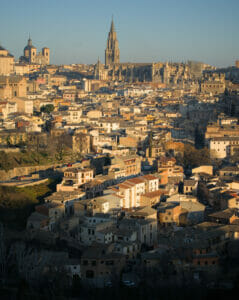
At the same time, our friends Pauline and Simon were visiting the region of Extremadura at the border with Portugal. So, as we wanted to travel a few days together, we quickly decided to meet in the region of Toledo, which seemed to have a lot of things to offer us and which was ideally located on our respective routes.
Once again, fate did things well because we were pleasantly surprised by the city of Toledo and its beautiful historical old town, classified as a world heritage site by Unesco. We also made nice natural discoveries like the Barrancas de Burujon, magnificent rock formations with orange colors which overhang the Tagus river not far from Toledo.
Here we go, let’s take you with us to discover this beautiful region!
A short history of the city of Toledo
The city of Toledo has a fascinating history of more than two millennia. It has been the setting of a rare cohabitation between the three great religions of Judaism, Christianity and Islam, leading to the nickname of “the city of three cultures”.
Already in Roman times, the city of Toledo developed in a meander of the Tagus and became one of the many prosperous cities of the Hispania province. But at the time of the great invasions of the Germanic populations (2nd – 5th), Toledo did not escape the plundering. However, in the 6th century, the Visigoths, who dominated almost the entire Iberian Peninsula, settled there and chose Toledo as their capital (there is a museum of Visigothic culture in Toledo).
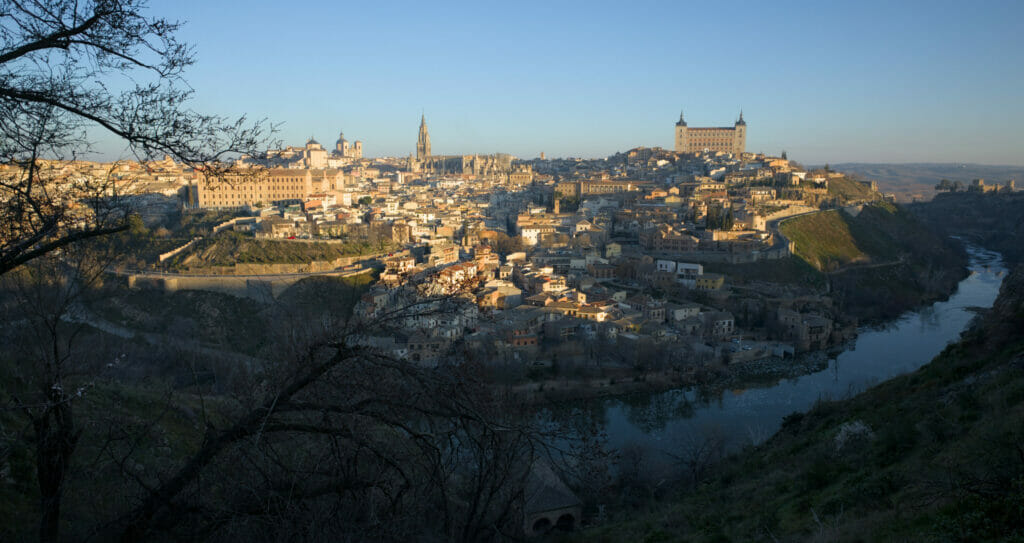
But the Visigothic period in Spain is rather short since in the 8th century the Muslims already invaded Spain and Toledo will follow the destiny of the Cordoba emirate and caliphate. As everywhere in Spain, there are still many elements from this period, such as the mosque-church Cristo de la Luz. At that time, Toledo already had a certain intellectual aura thanks to the fame of its Jewish schools.
However, the city’s Muslim period was just as short, since the Christians led by Alfonso VI of Castile took back Toledo as early as 1085, which was the first major victory of the Reconquista. Toledo became the capital of the Castilian kingdom and flourished in every way. The city became a renowned center, a meeting place for scholars of the three great religions: Christian, Jewish and Muslim.
The more recent history of Toledo is less glorious, since in the 14-15th century there was a period of anti-Jewish persecution and in the 16th century Philip II finally decided to move the Spanish court to Madrid, which enjoyed a more central position.
Now that you have a better idea of Toledo’s history, let’s get to the heart of the matter and visit the city and its surroundings.
Things to do and see in Toledo
As you can see, Toledo is a very interesting city! Whether it is from a historical (for its very well preserved heritage), cultural point of view (many museums), for its beautiful views, its gastronomy or its proximity to Madrid (30 minutes by train)… Toledo is clearly worth a visit! And if you want to visit all the main monuments and museums, you will clearly need to plan several days.
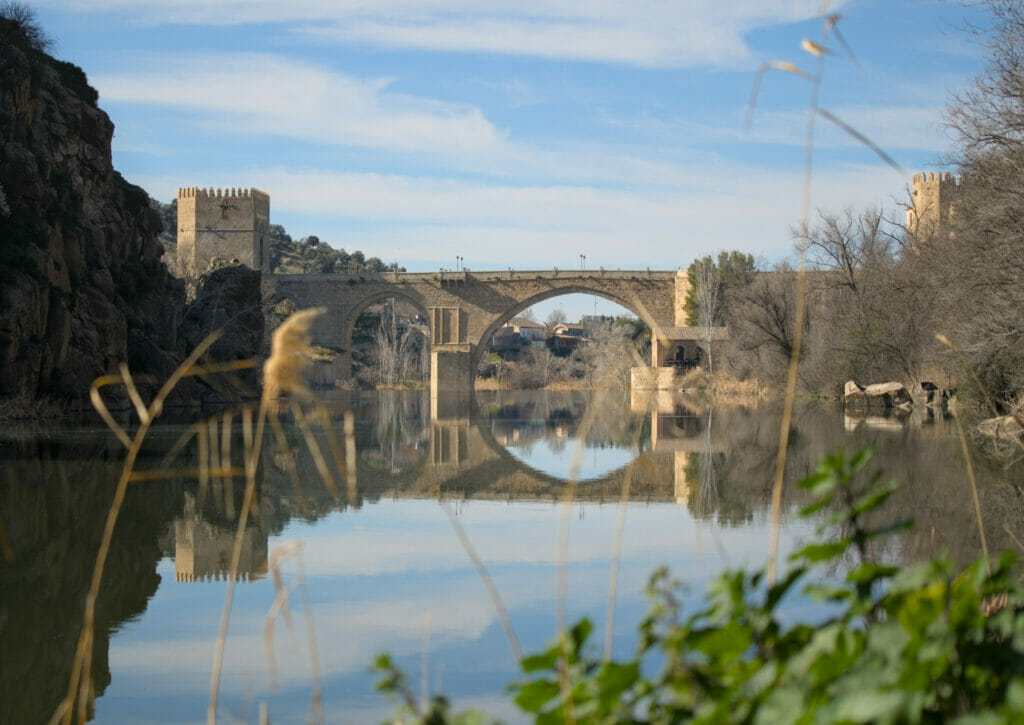
So as we were in a rather “relaxed” mode with our friends Pauline and Simon, we didn’t take the time to visit the city from A to Z. Below I’ll share with you our highlights in the city but also some monuments / museums that we would have certainly visited in normal time even if we didn’t visit them this time (it’s more to give you ideas of things to see and to do).
The old town of Toledo, a UNESCO World Heritage Site
It’s easy to get lost in the narrow streets of the old Toledo! However, it is a real pleasure to visit this authentic Castilian town and the diversity of architectural styles reflecting the rich history of this city. You will discover an ancient mosque, synagogues, churches, fortifications, bridges… all in a variety of styles (Arabic, Romanesque, Gothic, Renaissance…). It is not for nothing that the old Toledo was classified as a world heritage site by Unesco in 1986.
Note: In our opinion it is also worthwhile to walk around the old town of Toledo at night because all the monuments are beautifully lit.
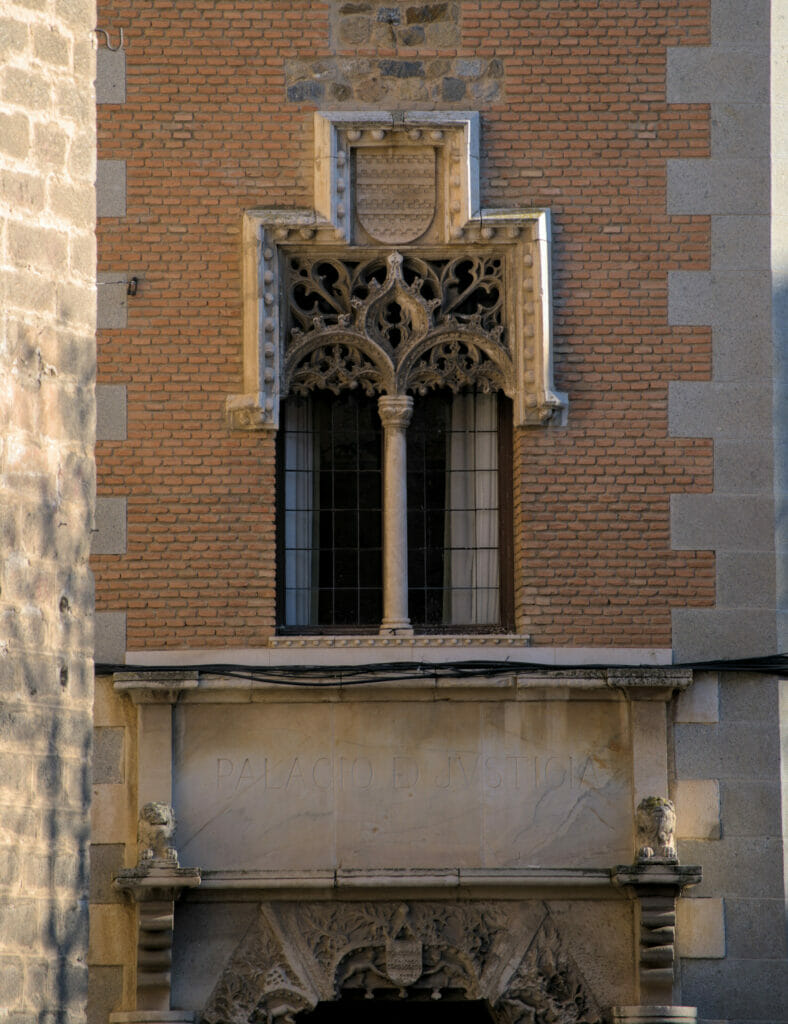
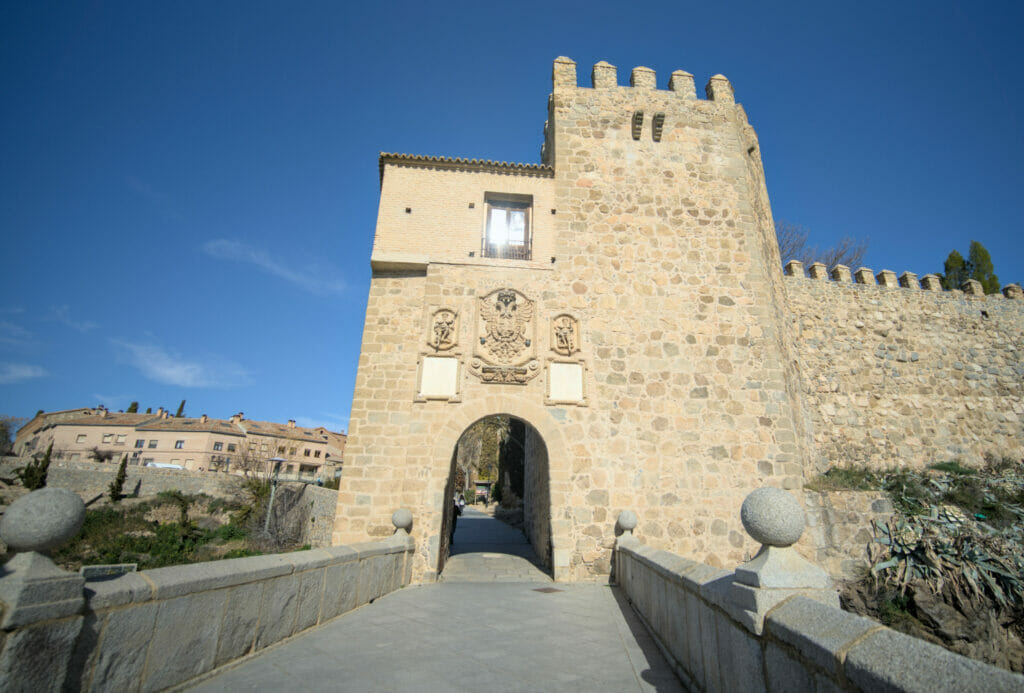
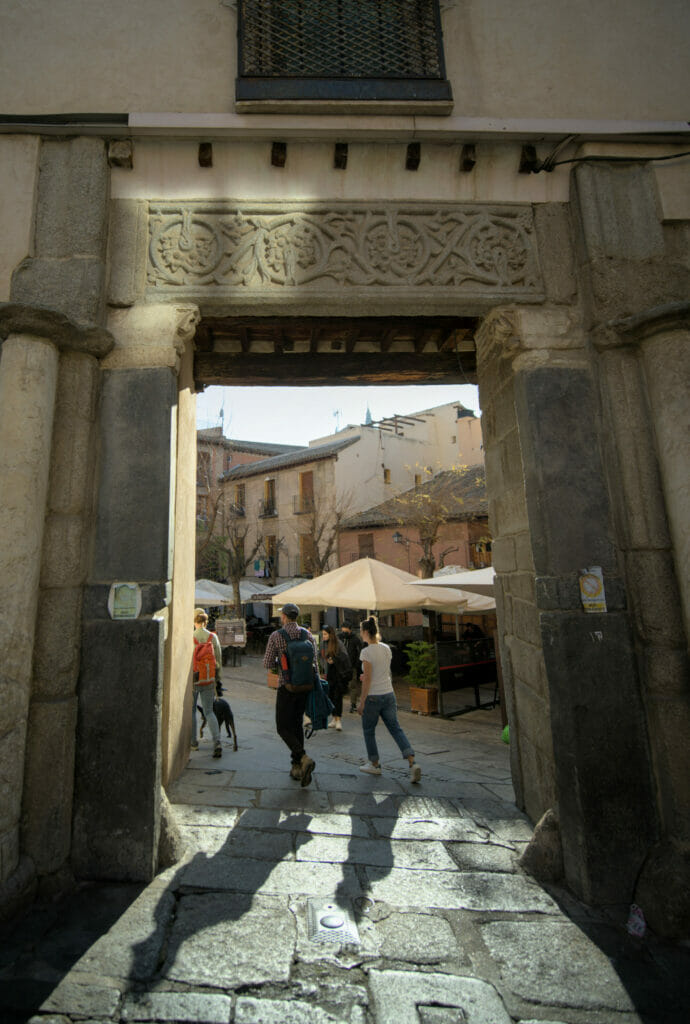
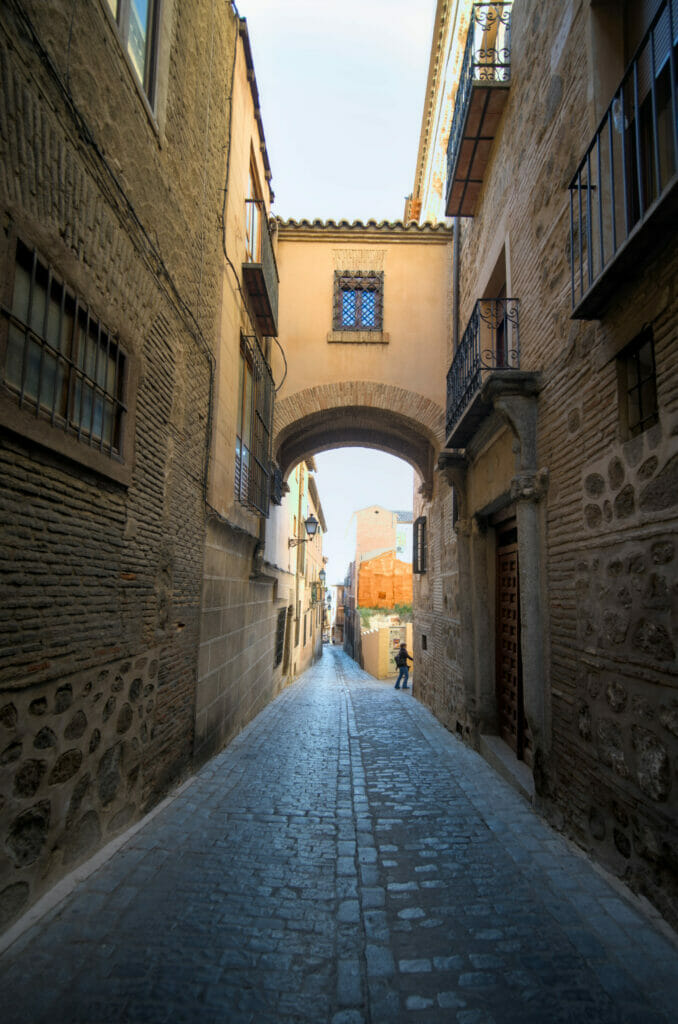
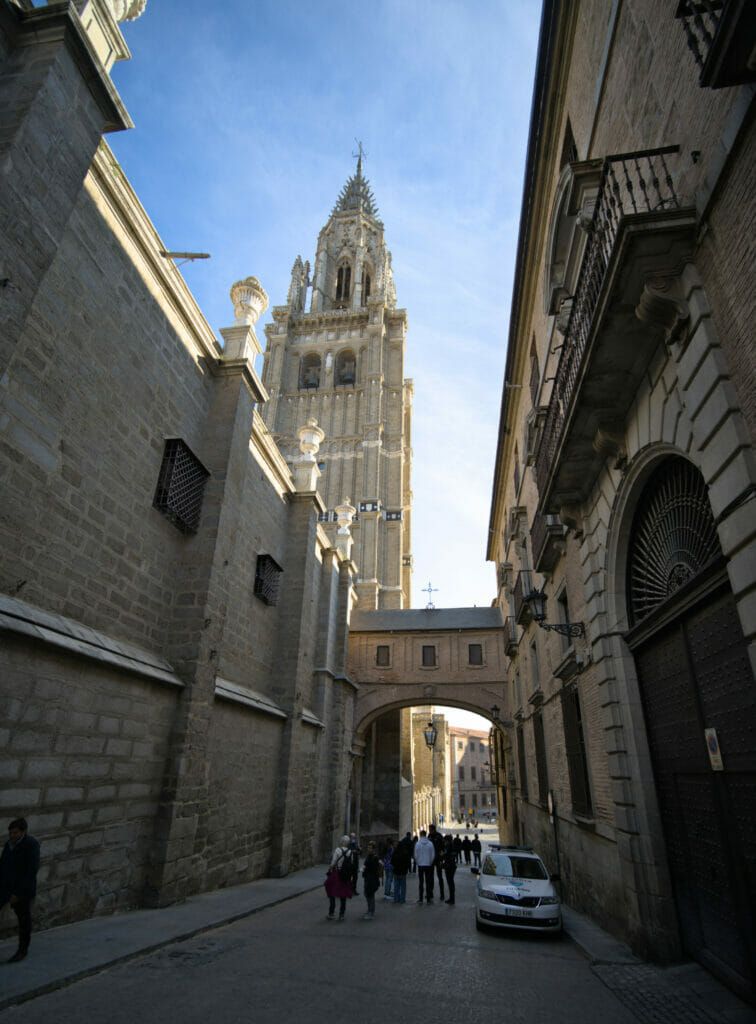
the Cathedral Saint Mary of Toledo
The cathedral of Santa Maria is without a doubt the most famous monument in Toledo. Like many churches in Spain, it was built on the base of a mosque in 1226 (which had been built on a church itself 🙂 ). Its construction was only completed in the 15th century, hence the mix of different gothic or mudejar styles which is quite remarkable!
On our side, we just admired this time the outside walls which are already very impressive (and the entrance fee is also a bit discouraging: 12,5€)! But if you have the time and the interest, the visit is probably worth it for all the richly decorated rooms you can visit. You should also know that in the sacristy, you can admire an important collection of works by El Greco, Titian, Velazquez or Goya (so it’s not just another church visit 😉 ).
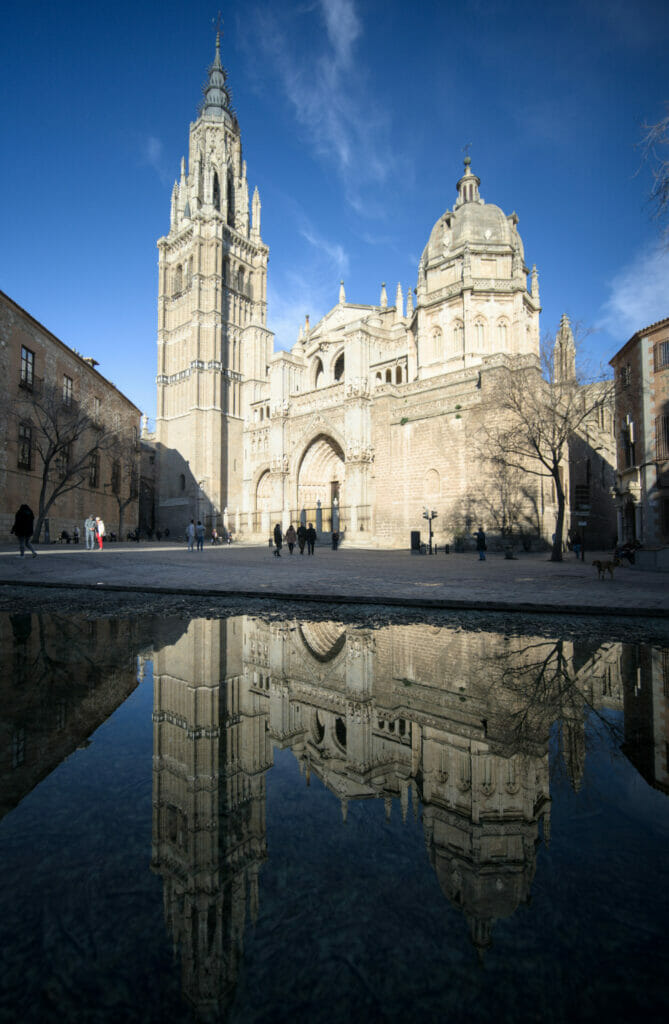
If you want to visit the cathedral, we would certainly pay a few euros more to make a visit with a local guide. It doesn’t cost much more and we definitely prefer a live guide to an audioguide 😉
The Alcazar of Toledo
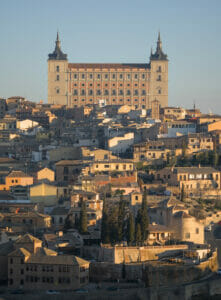
The Alcazar of Toledo is an imposing fortress that is located at the top of the highest hill in the city (impossible to miss as it dominates the city). Since Roman times, there has always been a fortress/palace in this place, which was in turn modernized by the Visigoths, the Arabs and then the Christians.
Today the Alcazar is home to the Military Museum and the Library of Castilla-La Mancha. Having visited it, we found the Alcazar interesting especially for the panoramic view over Toledo and for its different collections of weapons / military costumes. However, the military museum is almost too much for our taste! It would certainly take more than a whole day for a visitor passionate about history to take the time to read all the explanations that describe the chronology of the Spanish conflicts. We were simply drowned by the quantity of information 😉
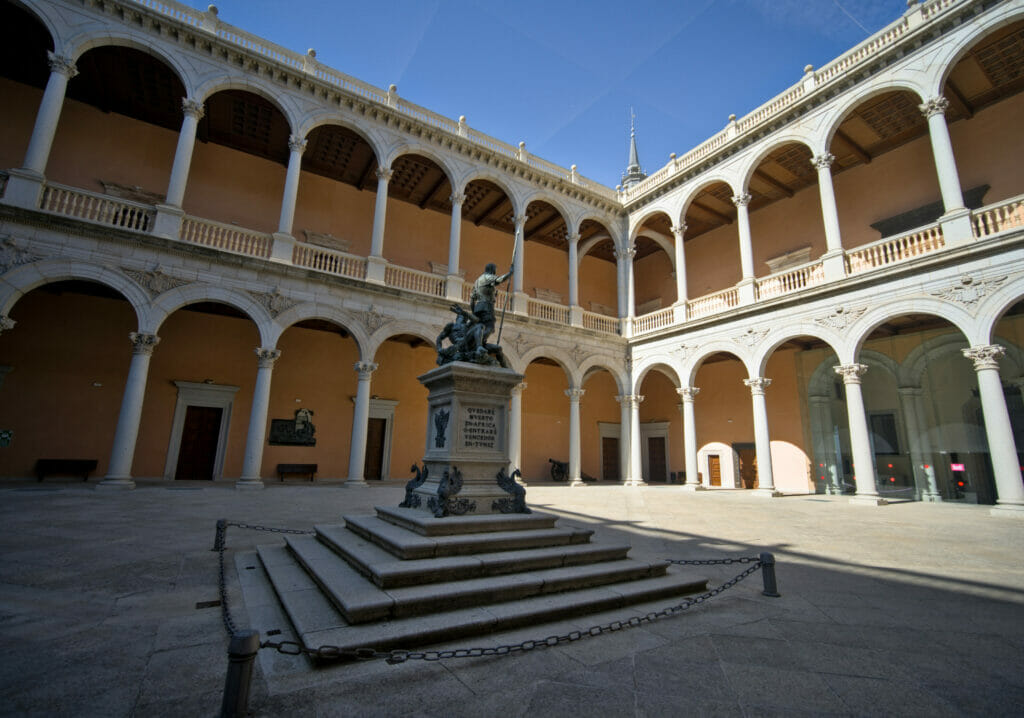
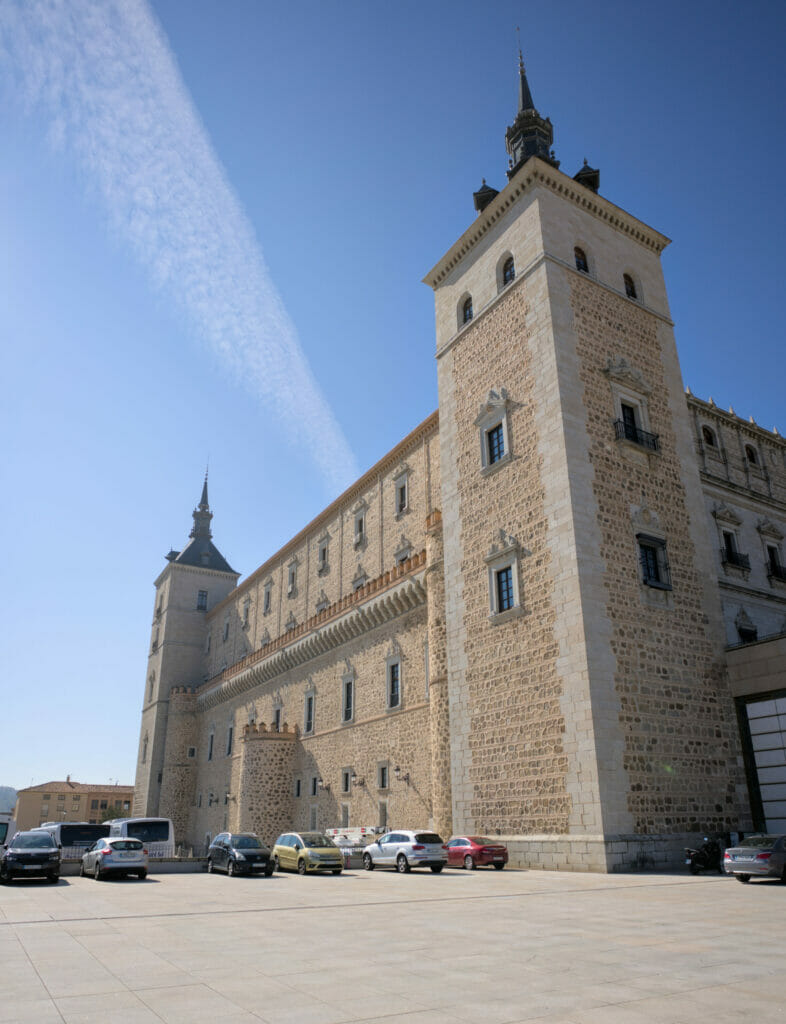
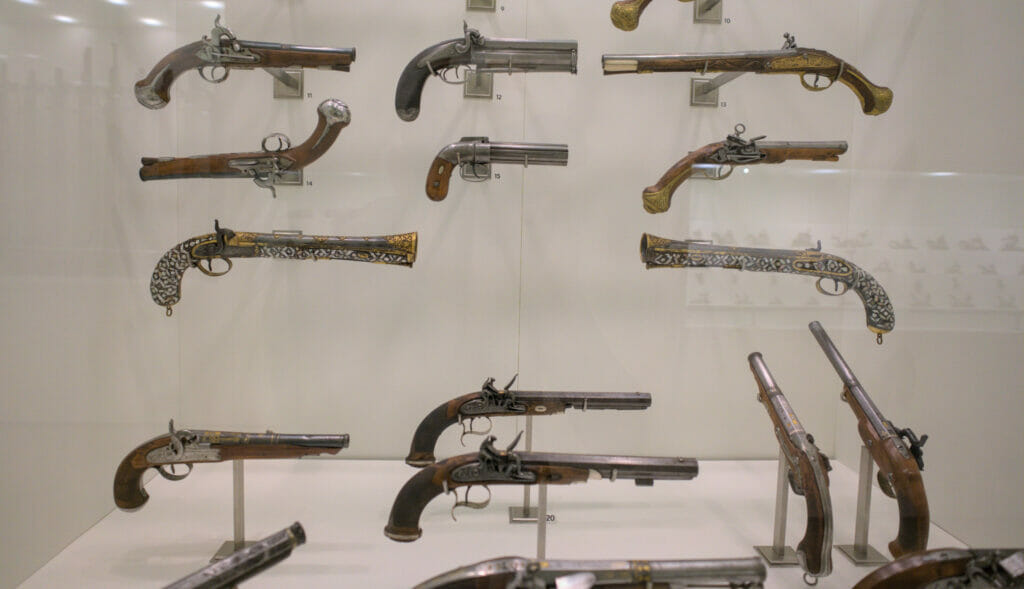
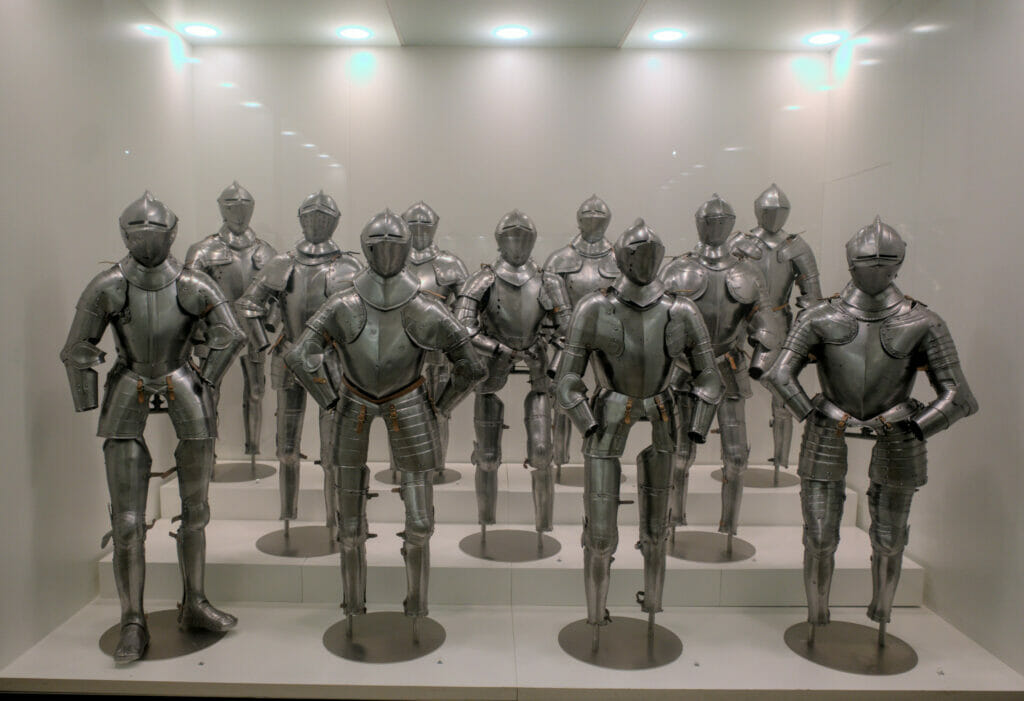
San Juan de los Reyes Monastery
This 15th century monastery, erected by the Catholic Kings, is one of the most beautiful buildings in Toledo and one of the best examples of Isabelian Gothic style in Spain. Unfortunately we arrived outside the opening hours #sniifff… So we just admired its exterior facades while sipping a good local craft beer on the esplanade (which offers by the way a very nice view on the San Martin bridge at sunset).
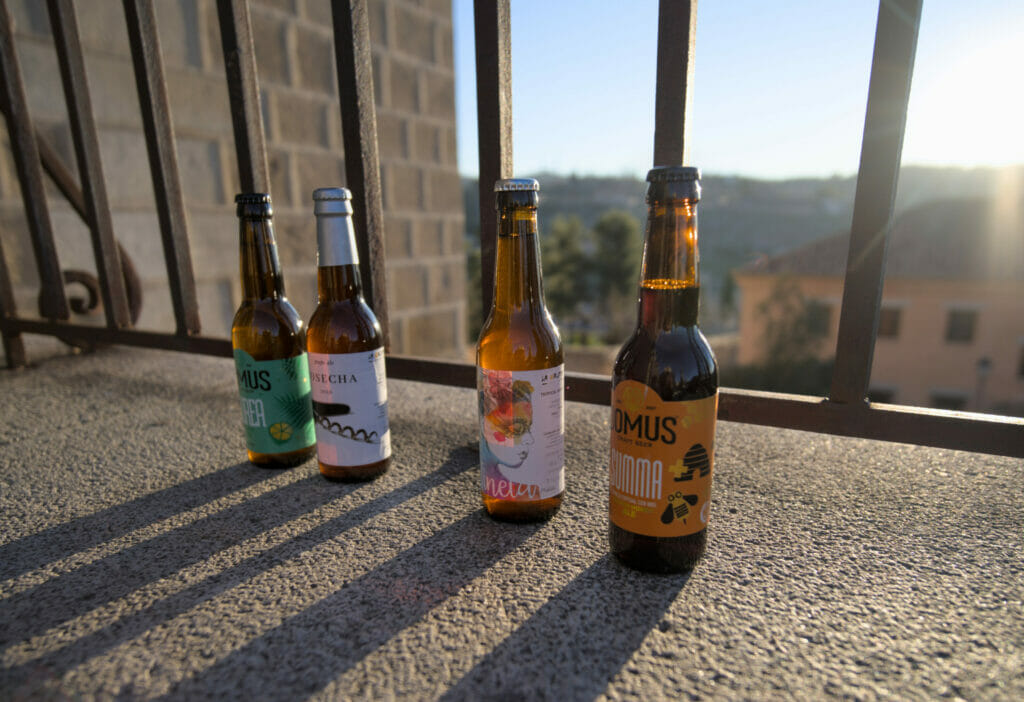
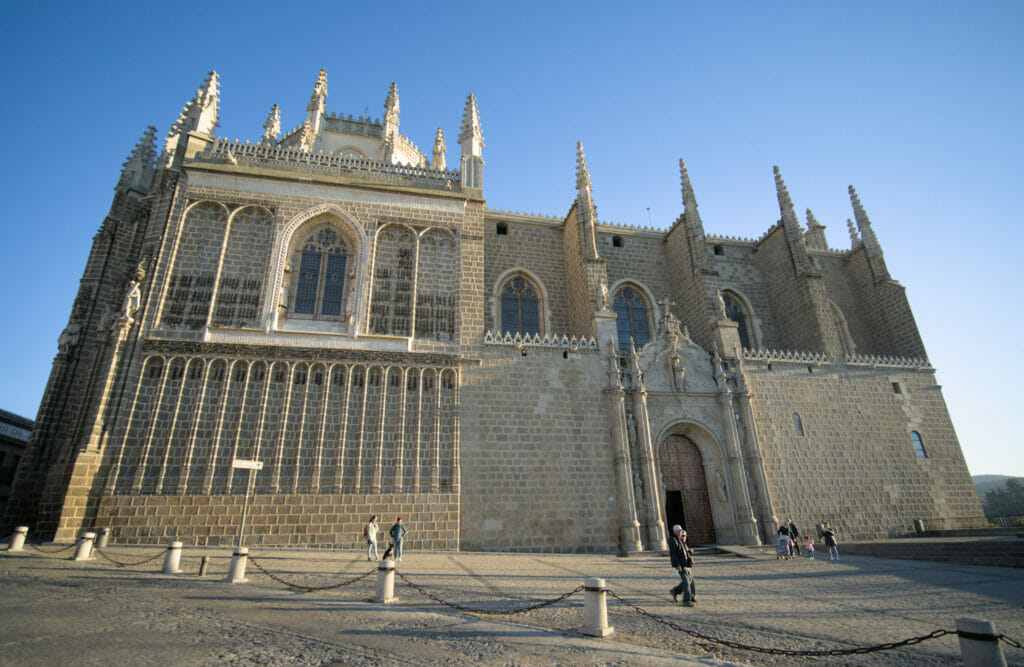
Other things to do in Toledo
As we said, we visited Toledo in a relaxed way, but if you have a little more time, you might also want to visit the following things:
- El Greco Museum: El Greco is one of the most important artists and historical residents of Toledo. His museum is located in a typical Toleban house that hosted him during his lifetime and contains an important collection of his work.
- Synagogue of Santa María la Blanca: A beautiful Mudejar synagogue that was the main place of worship for Jews in the 12th century. It was later converted into a church, although it looks much more like a mosque due to its Muslim architecture.
- The Bab al-Mardum Mosque – Cristo de la Luz Church: A former mosque that was converted into a church during the Reconquest and contains an interesting mix of Caliphate and Mudejar art.
- San Román Church and Museum of Visigothic Culture: A beautiful church-museum that traces the history of the Visigoths, who chose Toledo as their capital.
The best viewpoints and miradors of Toledo
Toledo is a very photogenic city, located on its hill inside a meander of the Tagus River. To admire it at its best, here are some ideas of viewpoints from which you will have a magnificent panorama of the city:
- the mirador del Valle (the most famous): Or rather the miradors del Valle because they are a series of miradors that are located along the road that overlooks Toledo on the other side of the Tagus. The view of the old city of Toledo is spectacular and we really do recommend that you take a walk there to enjoy the panorama. (Note: it seems that at night the view is simply incredible)
- The Alcazar: As it is located at the highest point of the city, you will have a magnificent panoramic view of Toledo from the Alcázar’s terrace.
- Alcantara Bridge: Roman bridge from which you have a beautiful view of the Alcazar and part of the old city
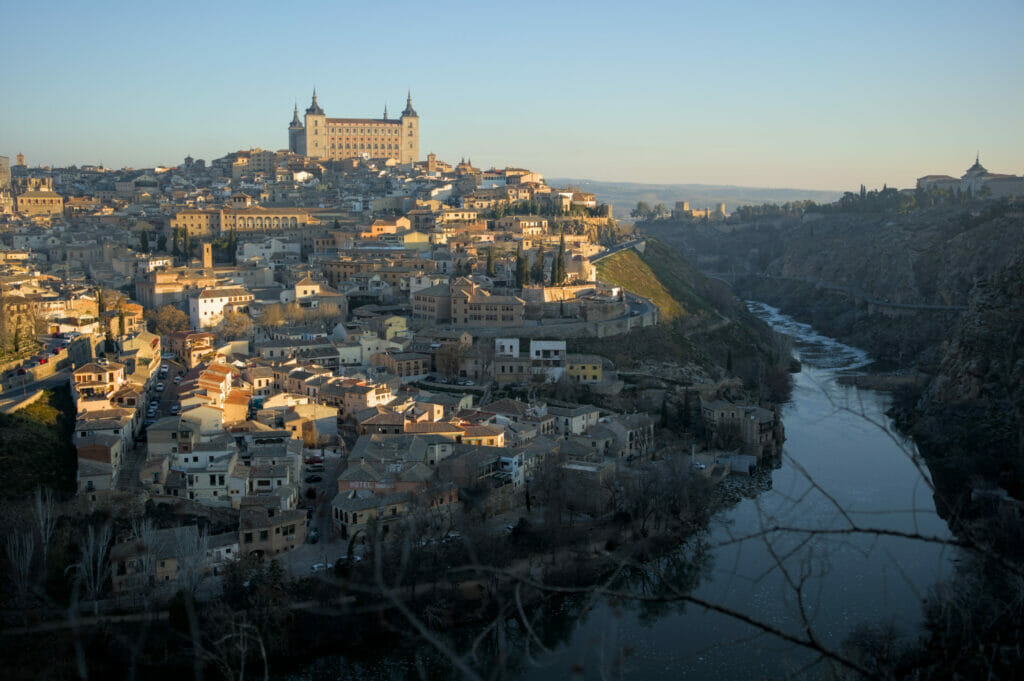
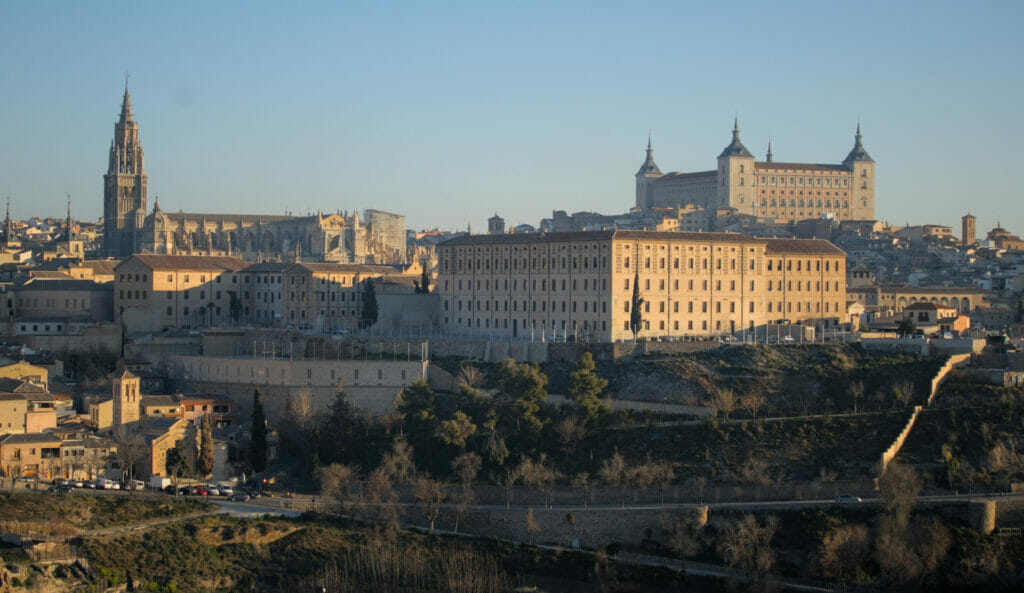
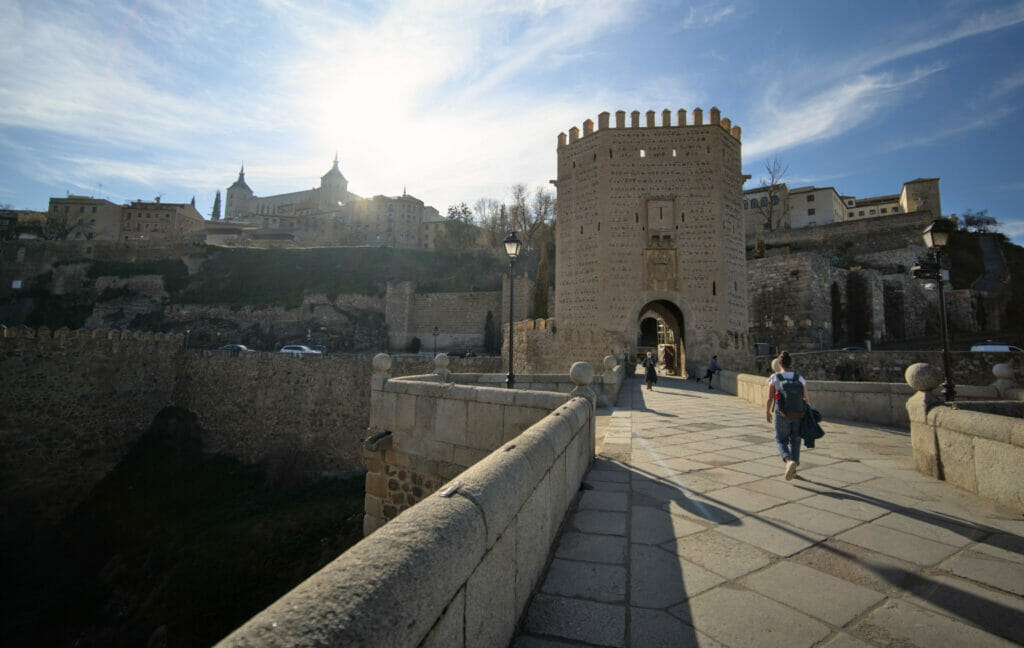
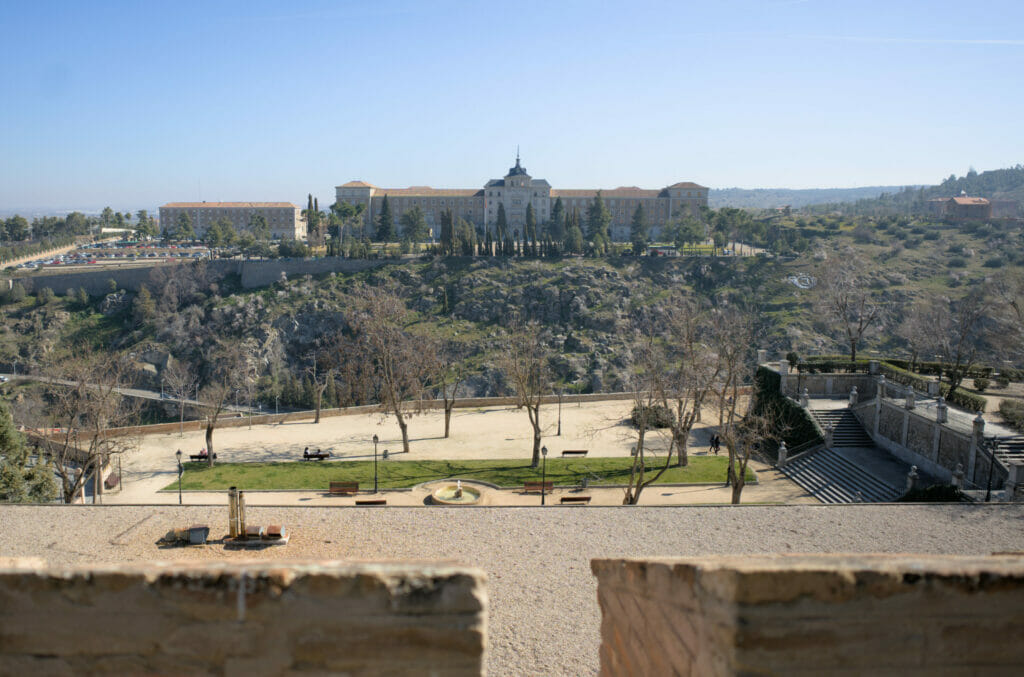
the perfect hike to visit Toledo
For a change, we once again managed to do a great hike that combines the more natural side of the city along the Tagus river and the main points of interest of the old Toledo. So if, like us, you like to hike and you want to discover Toledo on your own, you should like this route!
In a little more than 7kms, you will take a breath of fresh air along the Tagus River and discover at the same time the magnificent old town of Toledo and its historical monuments.
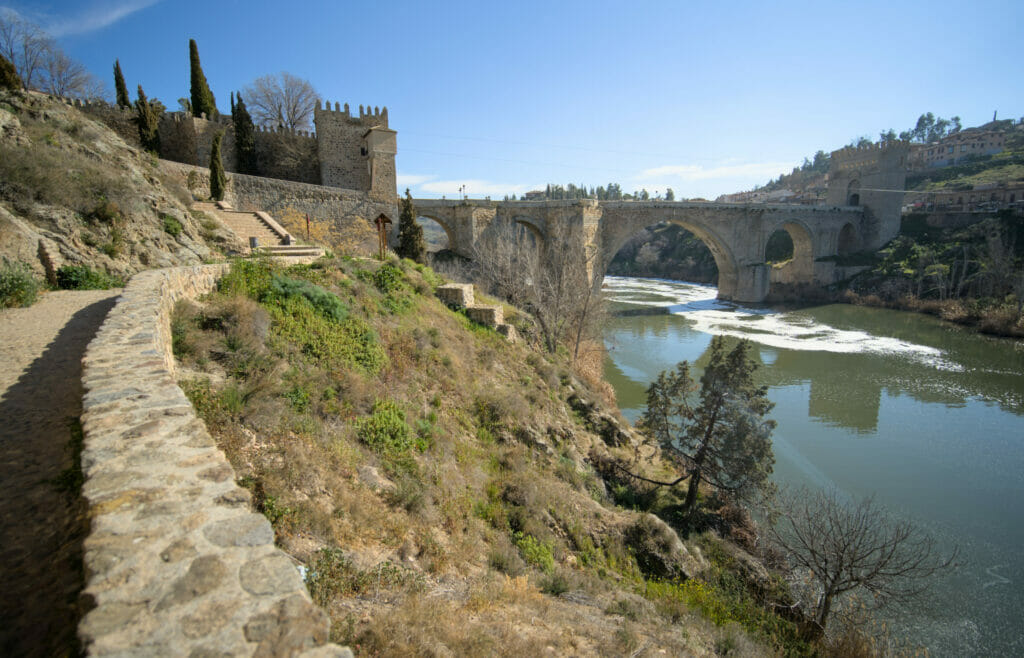
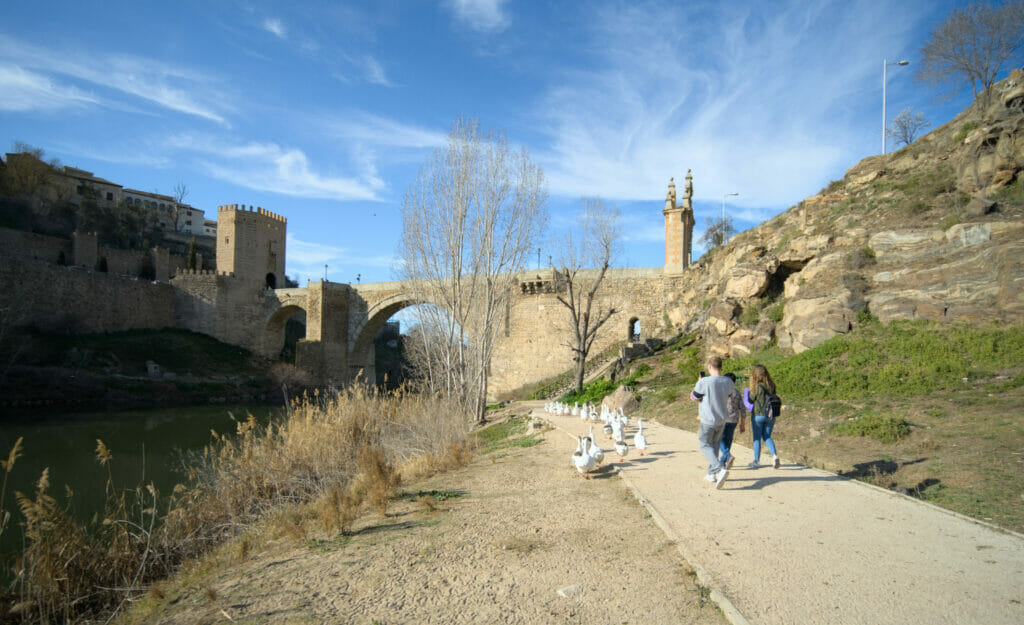
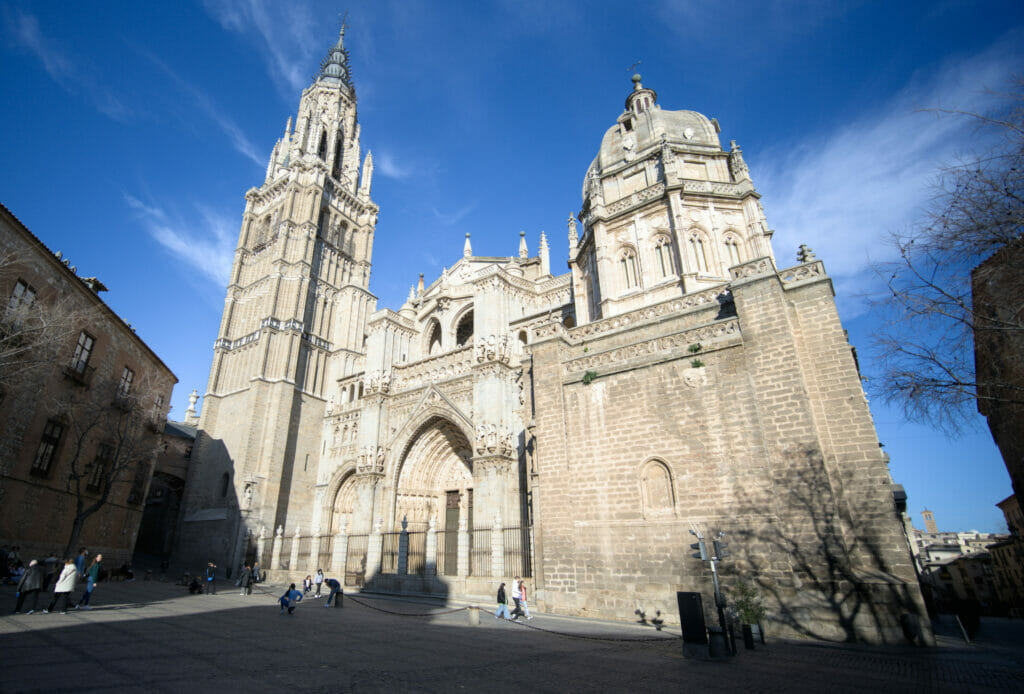
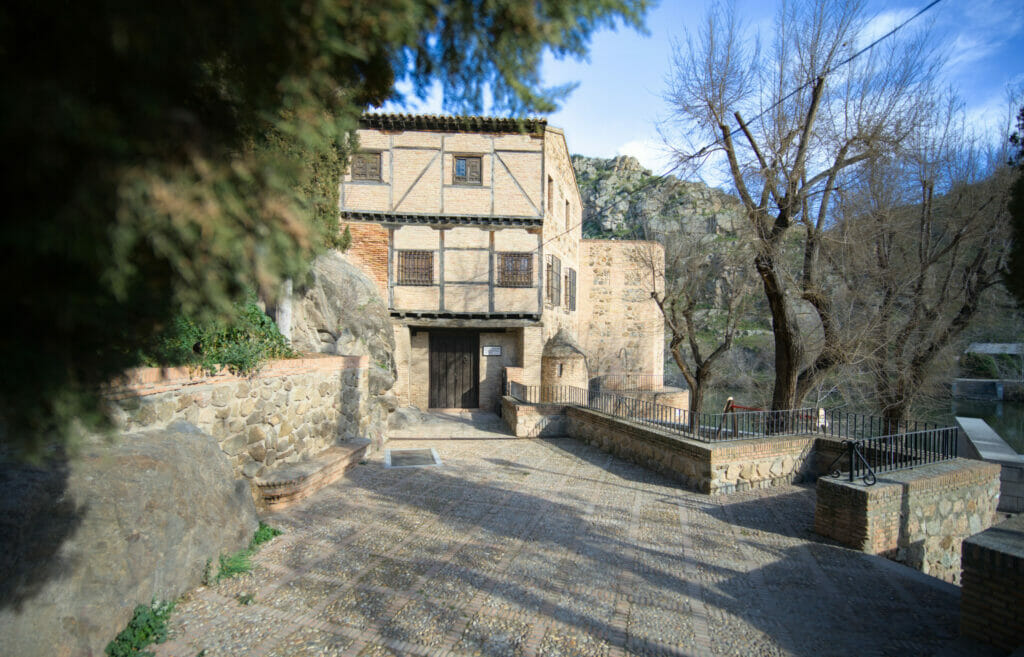
Speaking of hikes, there is also a free walking tour in Toledo. If you don’t know the concept yet, you can discover a city on foot with a guide (in a small group). The tour is “free” but you have the possibility to tip the guide if you enjoyed the visit and his explanations. Every time we visit a city, it’s always the first thing we try to do because it gives a very good overview of the city and the things to do. We wanted to do the free walking tour of Toledo but who knows why, the guide never arrived at the meeting point (we were however at least 8 people waiting) 🙁 . #Snifff
What and where to eat in Toledo
When it comes to culinary specialties, it seems that after a thorough study of the restaurants’ menus in the old part of Toledo, the partridge is one of the stars of the region. Partridge stew, partridge terrine, partridge tapas… you’ll find partridge in every sauce (although we must confess that we haven’t tried it since we rarely eat meat anymore).
Another specialty of the region: queso manchego! It is a typical goat cheese from the region of Castilla – la Mancha protected by a DOP. By the way, if you are interested, there is a small cheese museum right next to the Toledo Cathedral with a store selling local products. With a good local red wine it’s a killer!
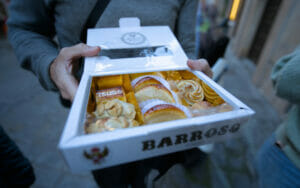
Finally, for the sweet tooths, you will find in the streets of Toledo many sweets based on Toledo marzipan, itself protected by a DOP. And as I absolutely can’t resist any almond-based pastry, we also left with a box of cookies.
As for our best restaurants, we will share with you only one: the Tapas restaurant El Trebol. We really liked this address which offers delicious tapas with local wines or good craft beers. In addition the service was very good! No wonder we had to queue to get in 😉
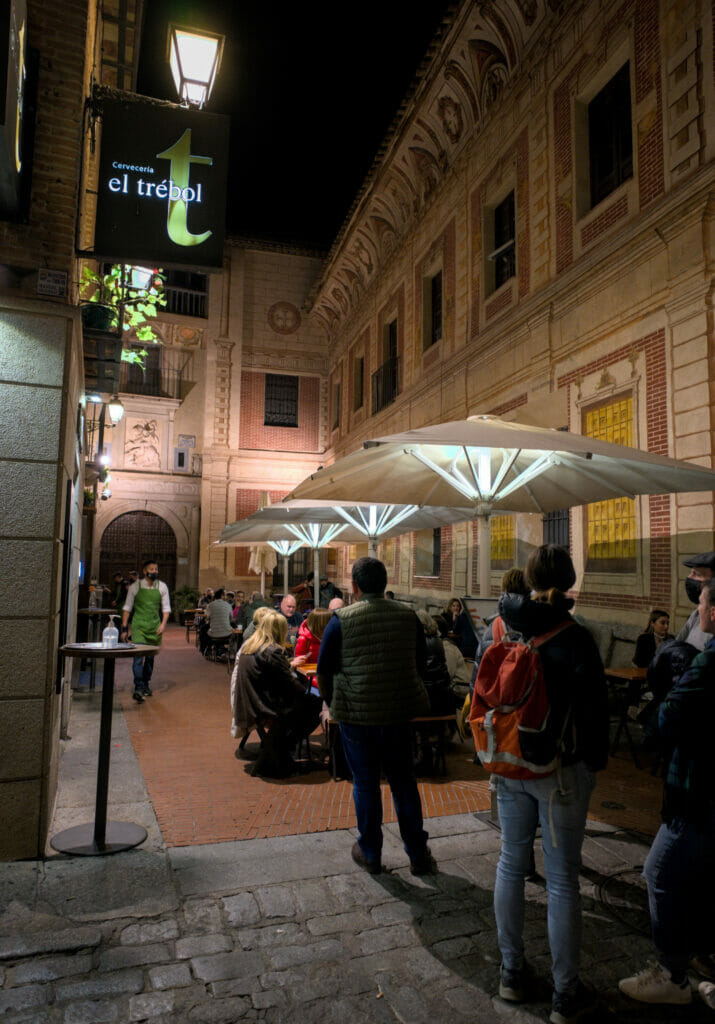
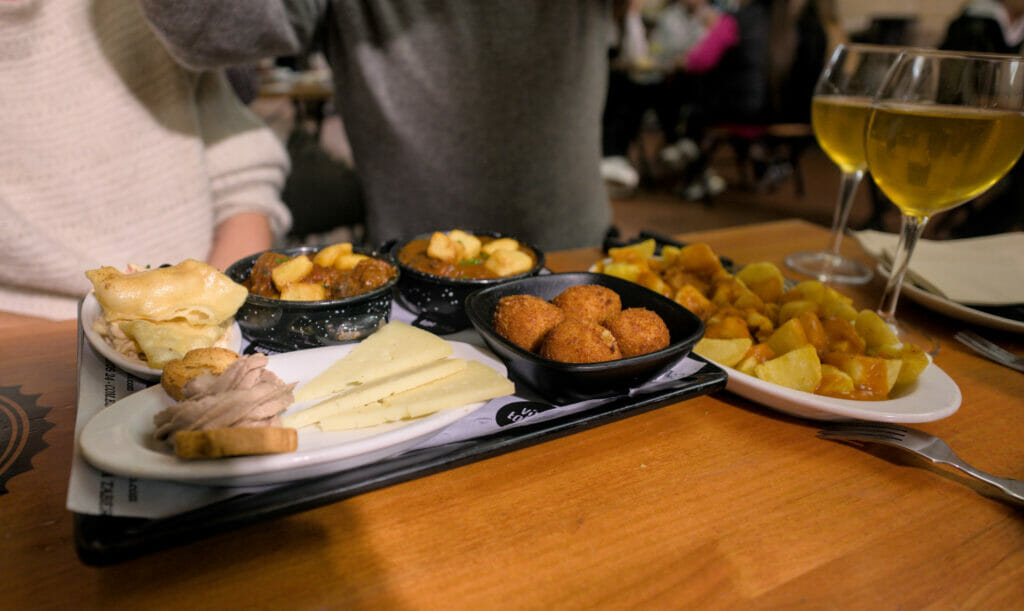
Things to do and see around Toledo
Obviously we won’t pretend to have covered the Toledo region from A to Z… but we have made one or two discoveries that are really worth the detour in the region if you want our opinion:
Las Barrancas de Burujon
The Barrancas de Burujon (or Barrancas de Castrejón y Calaña), located about 30 km from Toledo, were the highlight of our visit to the region! These orange cliffs that follow a meander of the Tagus river near the Castrejon dam have nothing to be jealous of some of the most beautiful places in the US (like the horseshoe bend or the grand canyon). These magnificent rock formations are the result of millions of years of erosion by the wind and water of the Tagus.
From the parking of the Barrancas, we made a magnificent 10kms hike which took us along all the cliffs to discover them under every angle. It is frankly one of the places which we preferred in Spain until now and we warmly recommend you this trip.
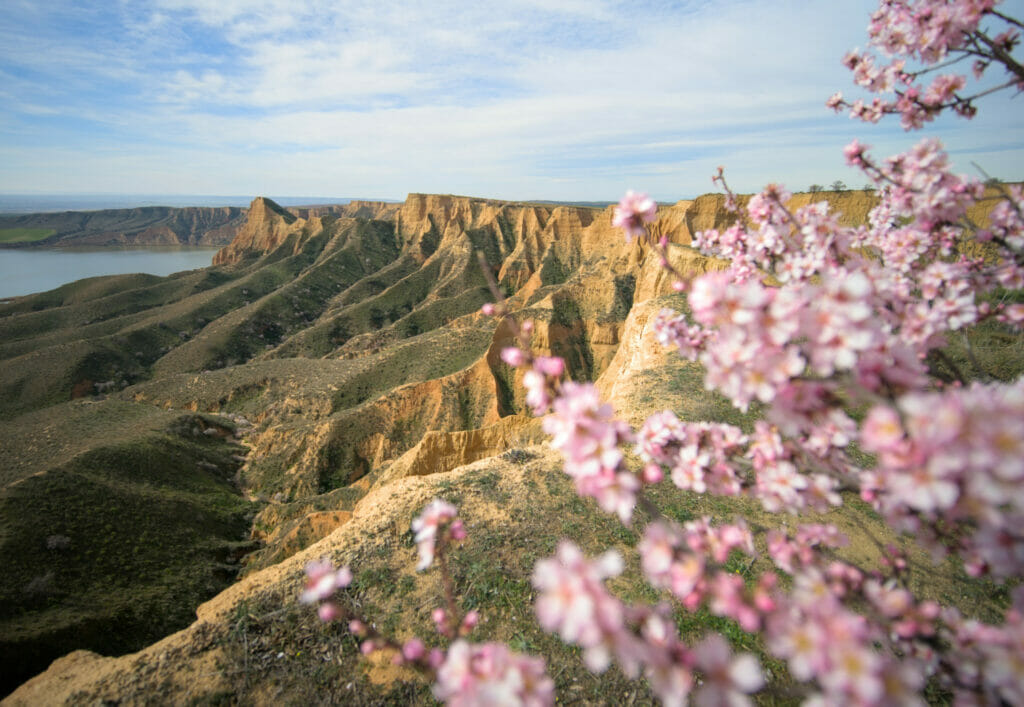
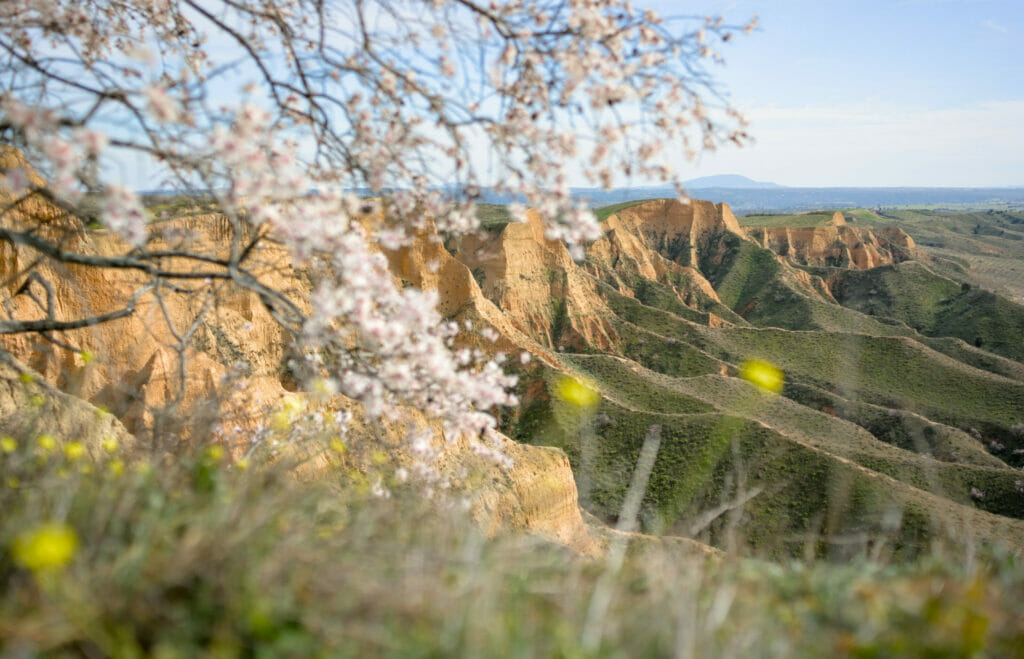
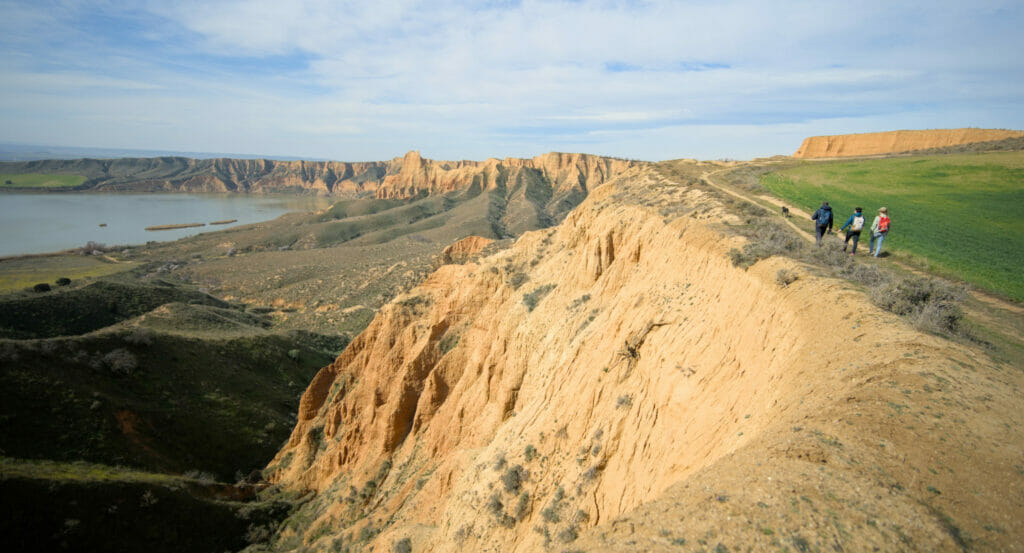
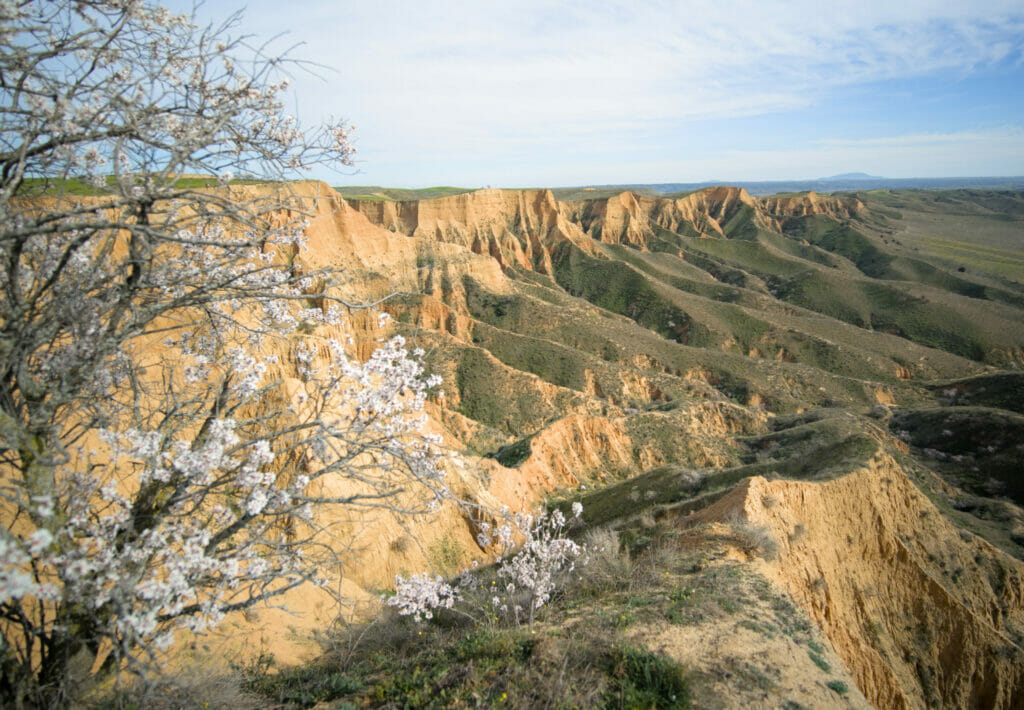
PS: Don’t be discouraged by the rather “ordinary” aspect of the parking! The incredible rock formations are not visible at all from this point and it is, in fact, quite difficult to imagine that such landscapes are hidden here!
And if you are a morning person, don’t miss the sunrise on the Barrancas de Burujon… spectacle guaranteed! Judge for yourself:
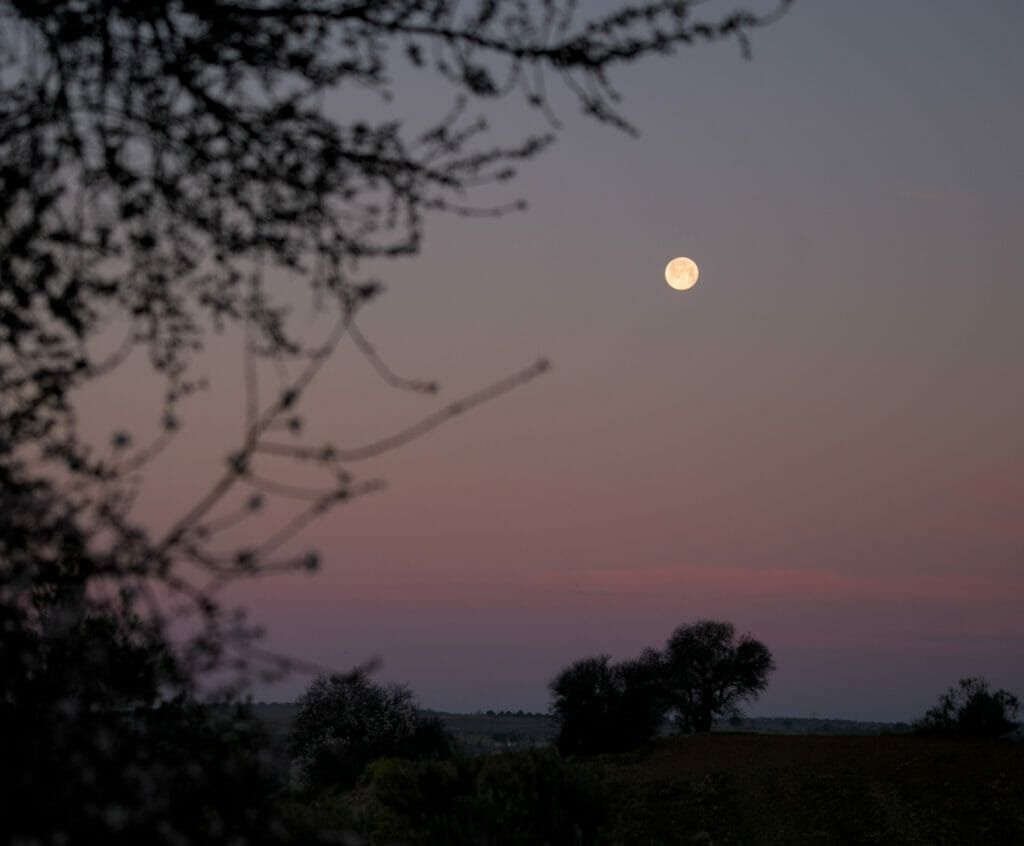
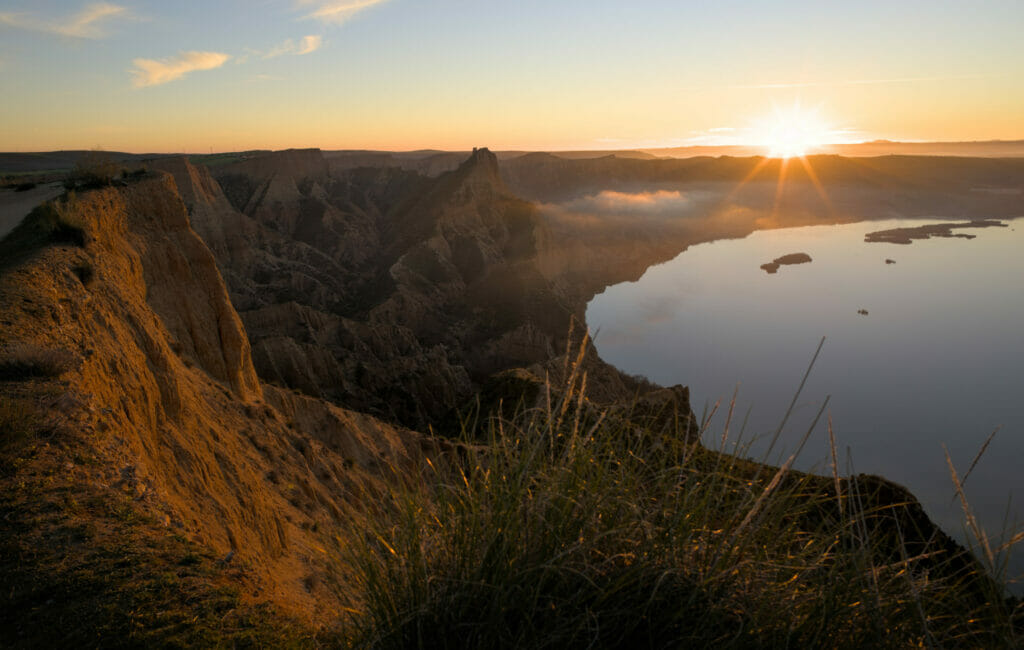
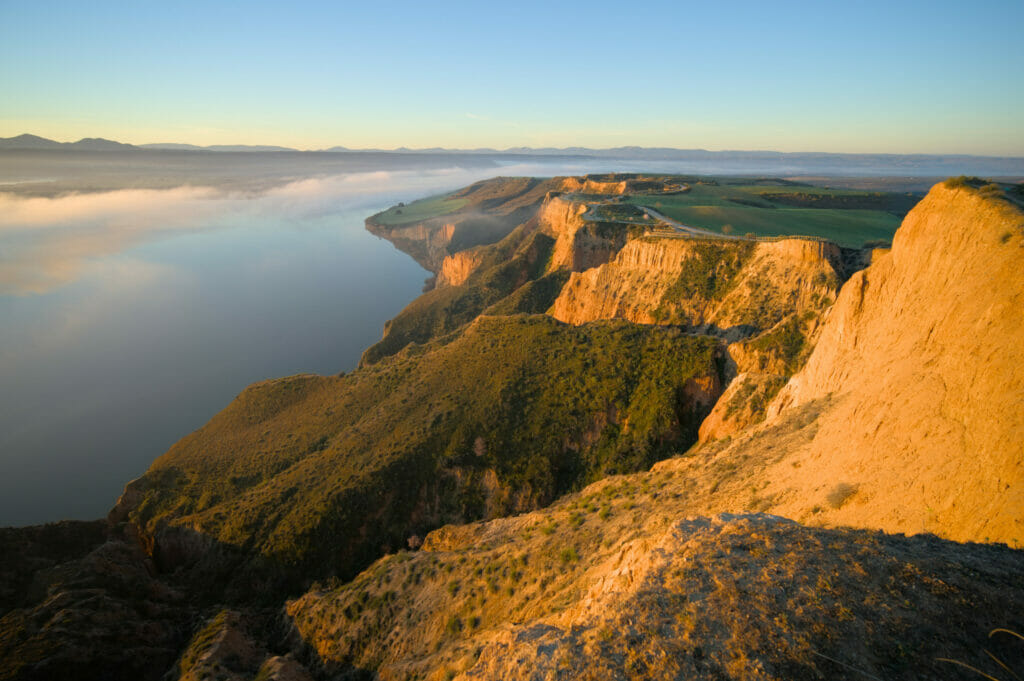
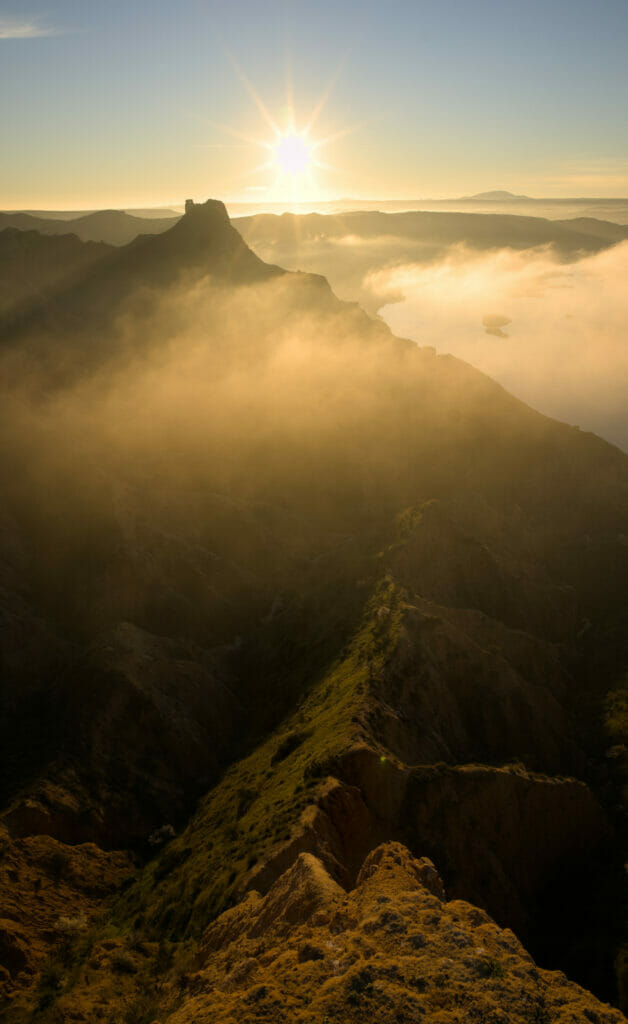
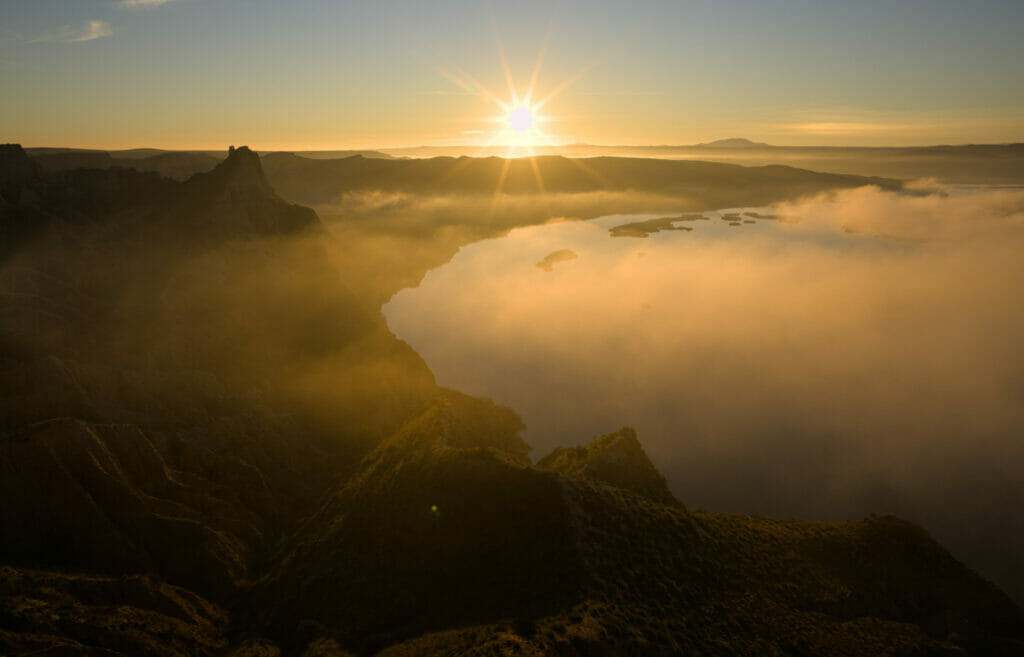
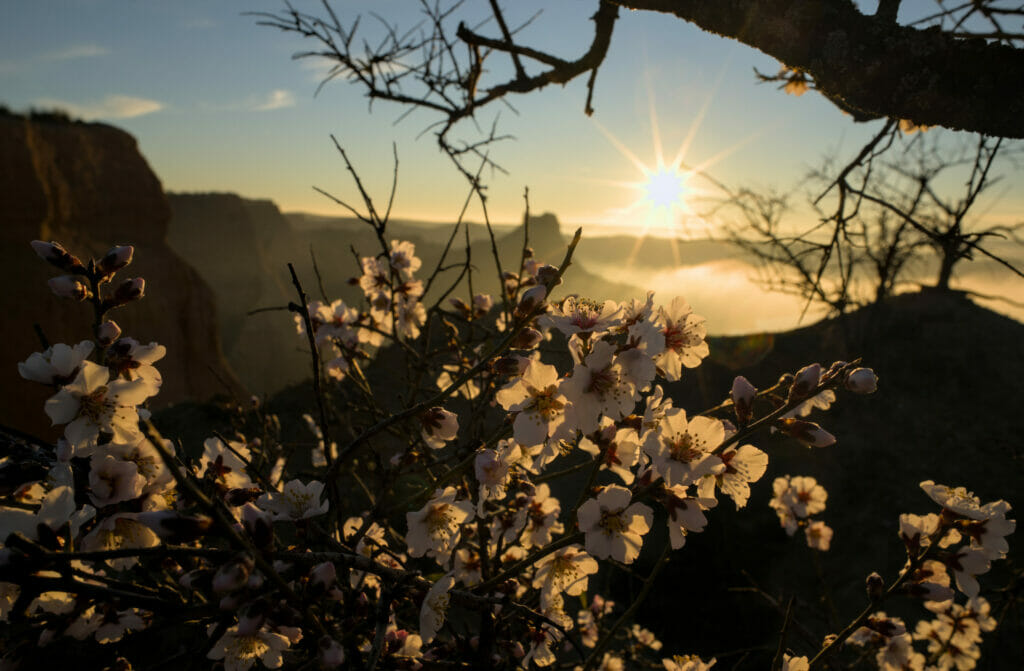
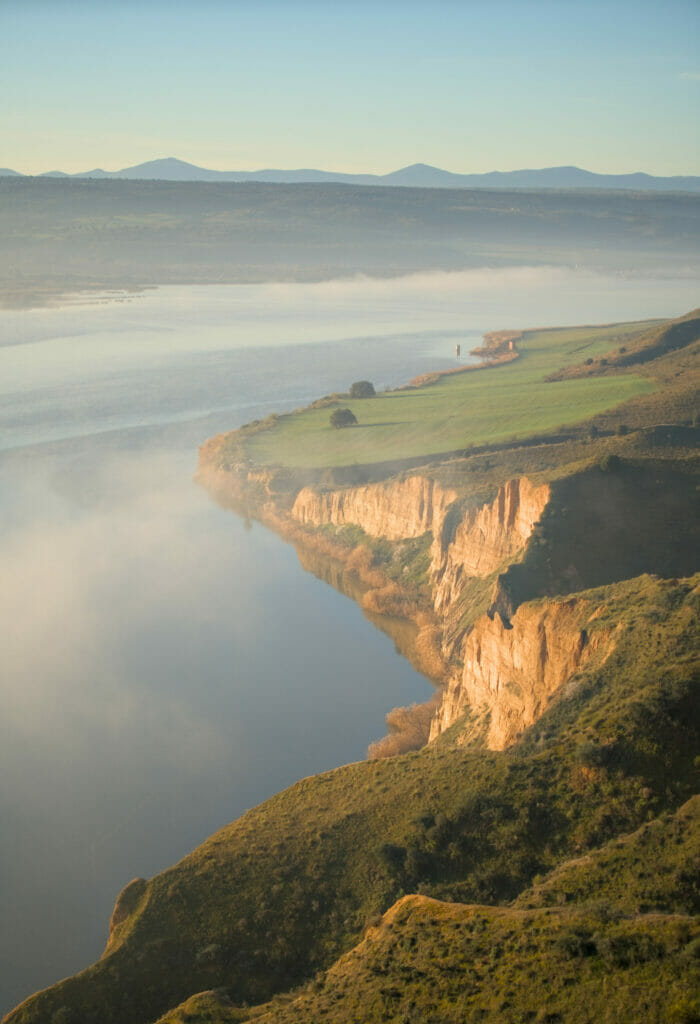
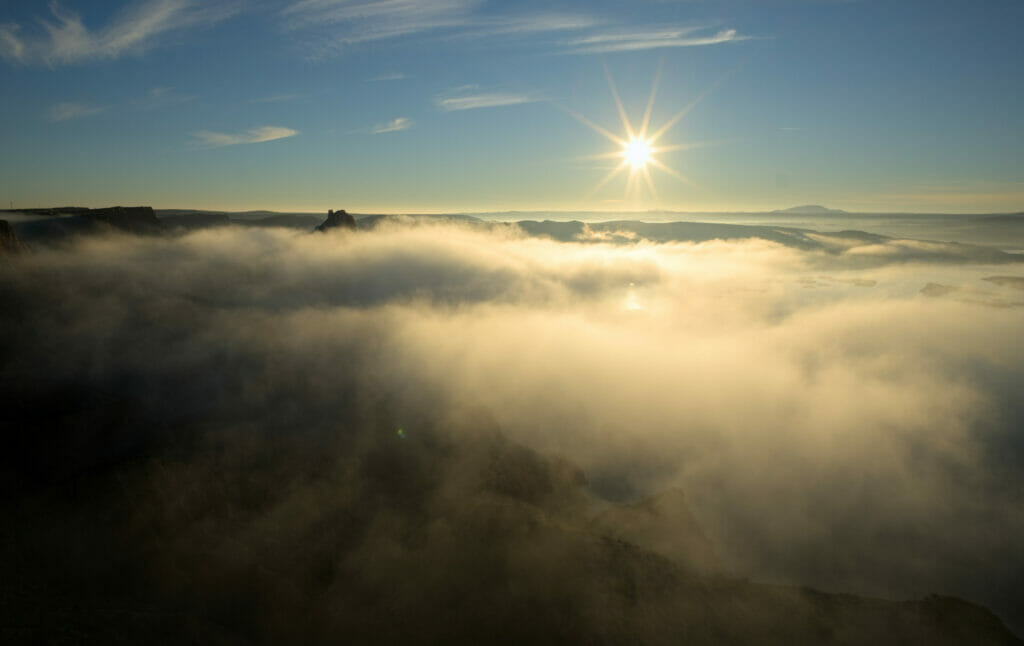
The Cabañeros national park
Cabañeros is the least visited of Spain’s 16 national parks, yet it is one of the most important protected areas in the Iberian Peninsula. You will find a great variety of plant and animal species (a high percentage of which are endangered) as well as a great variety of landscapes.
The park is divided into two distinct parts: the Raña and the Sierra. The first is a flatter area with abundant vegetation where you can observe many animals. The second is more mountainous with many streams and waterfalls and is home to various species of birds of prey.
So we didn’t try to explore this park completely either, but we spent a whole day and 2 nights there, which gave us time to hike and watch many migratory birds passing over our heads. We did the Ruta del Boquerón del Estena, which is an easy hike along a beautiful river with interesting rock formations. But if you’re looking for more hiking ideas, you can find a map with all the trails in the park here.
Below you can enjoy some pictures of the park and the map of the hike we did:
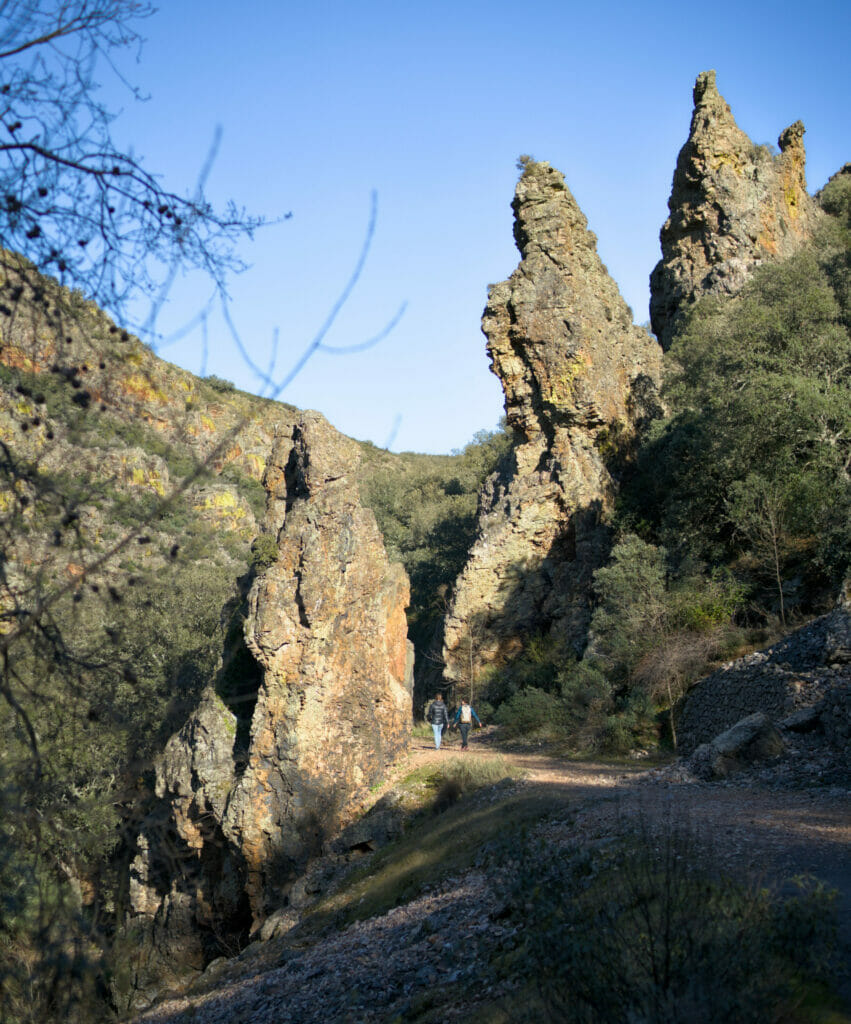
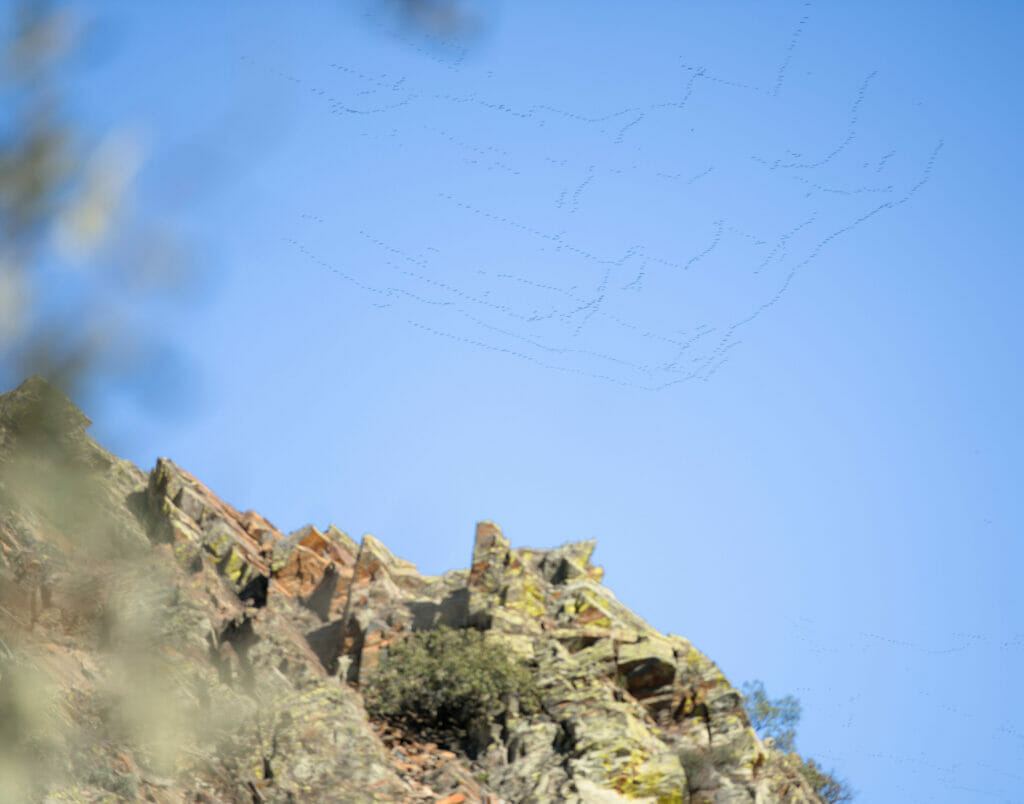
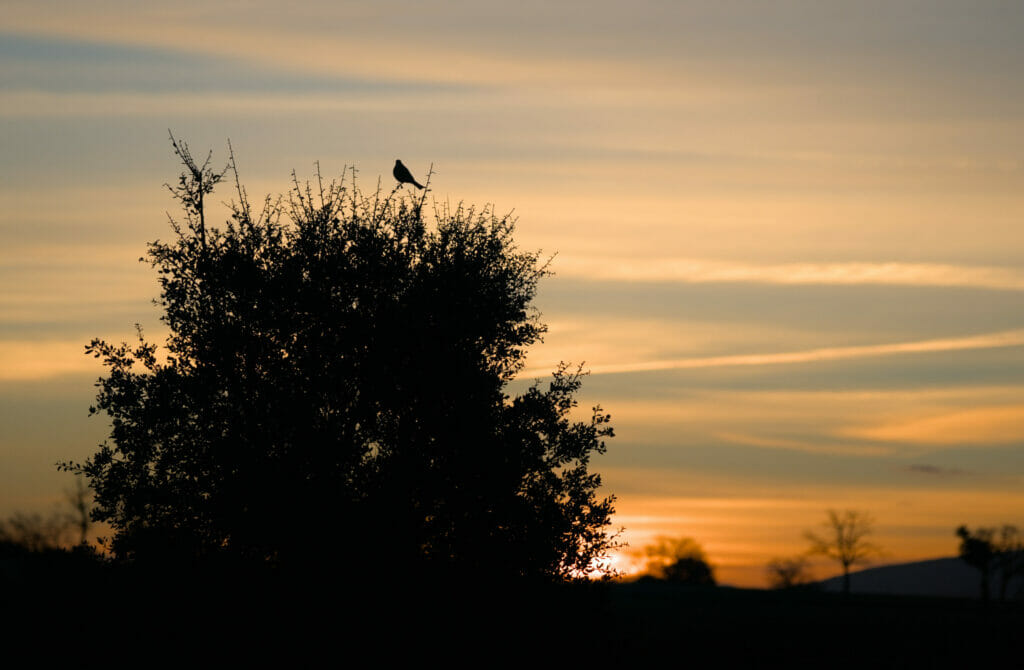
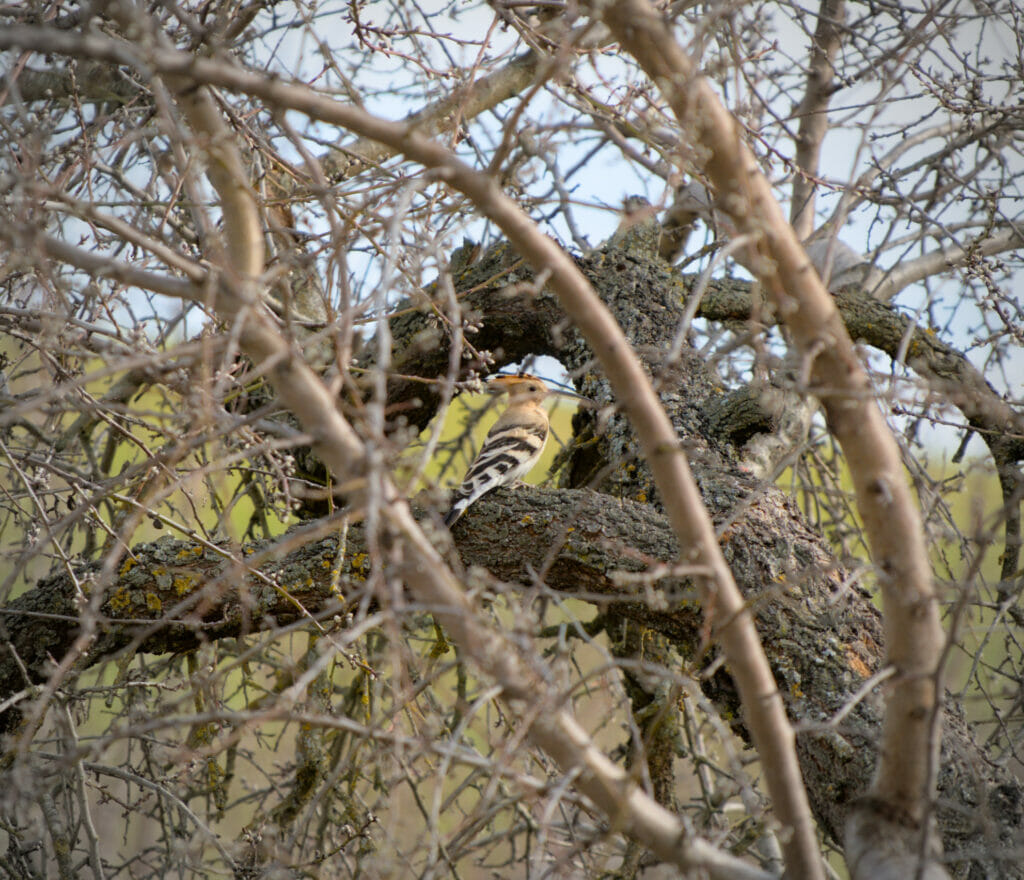
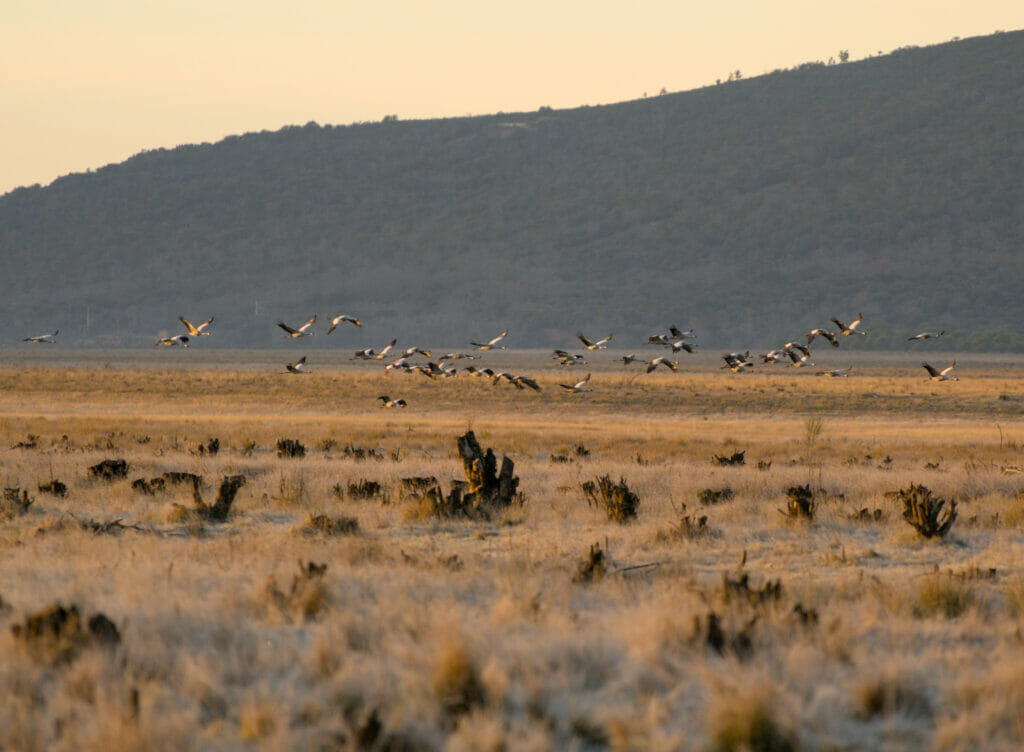
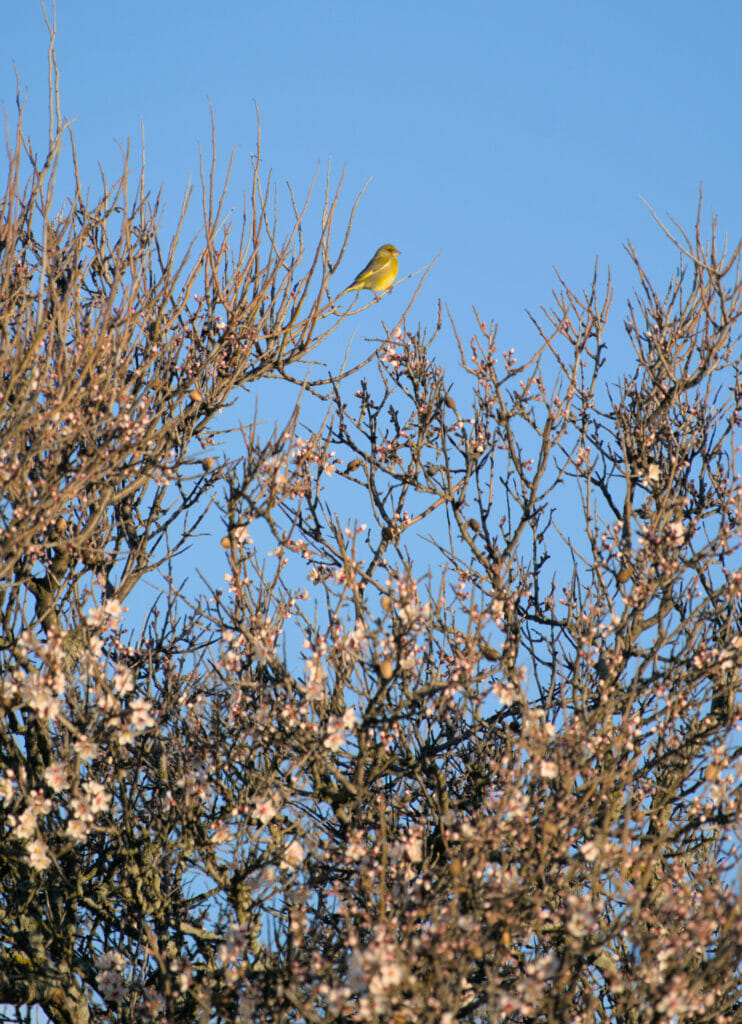
How to come from Madrid to Toledo?
By train
There are trains every hour from Madrid Atocha station to Toledo station. By the way, take the time to visit the Toledo train station which is one of the most beautiful in Spain! For the prices, count 13,9€ for a one-way ticket and 22,2€ for a round trip.
Organised tour
If you don’t want to bother, there are also many organized bus tours that take you from Madrid to Toledo and include a guided visit to the cathedral for example.
And if you are looking for a hotel or an apartment to spend a few days in Toledo, we recommend you to take a look at Booking.com (where you can find both apartments for rent and hotels) or simply use the interactive map below:
Our Map of things to do in Toledo
Here is a small google maps with the location of all the points mentioned in this post:
We hope that this post will give you some ideas of things to do and see during your trip to Toledo. We really liked this little city and its surroundings and we can only recommend you to spend a few days there if you travel in the region. And as usual, if you have any other information or personal favorites to share about the city of Toledo and its surroundings, don’t hesitate to leave a comment below. It could be useful to other travelers who will read these lines.
Pin it on Pinterest
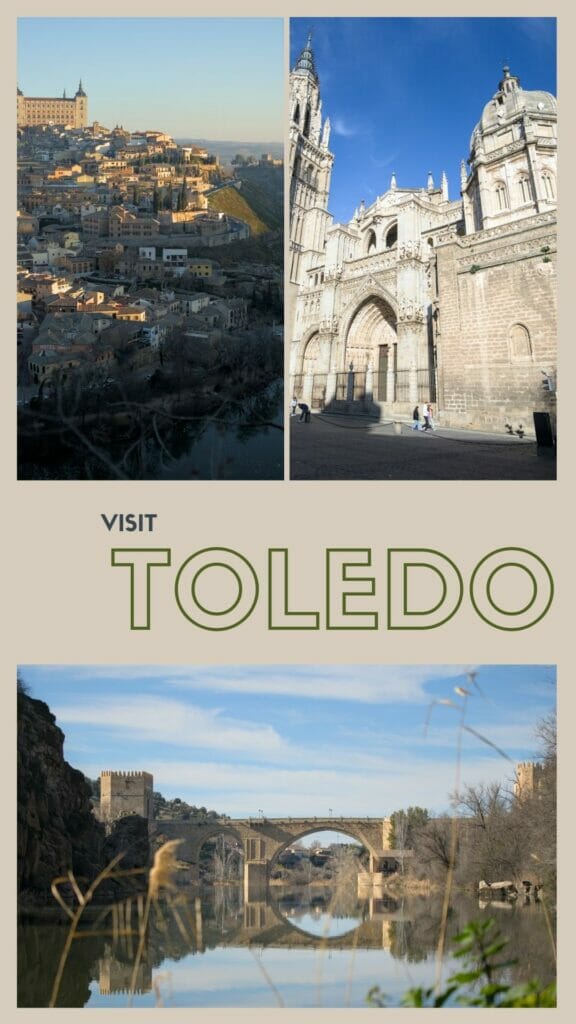
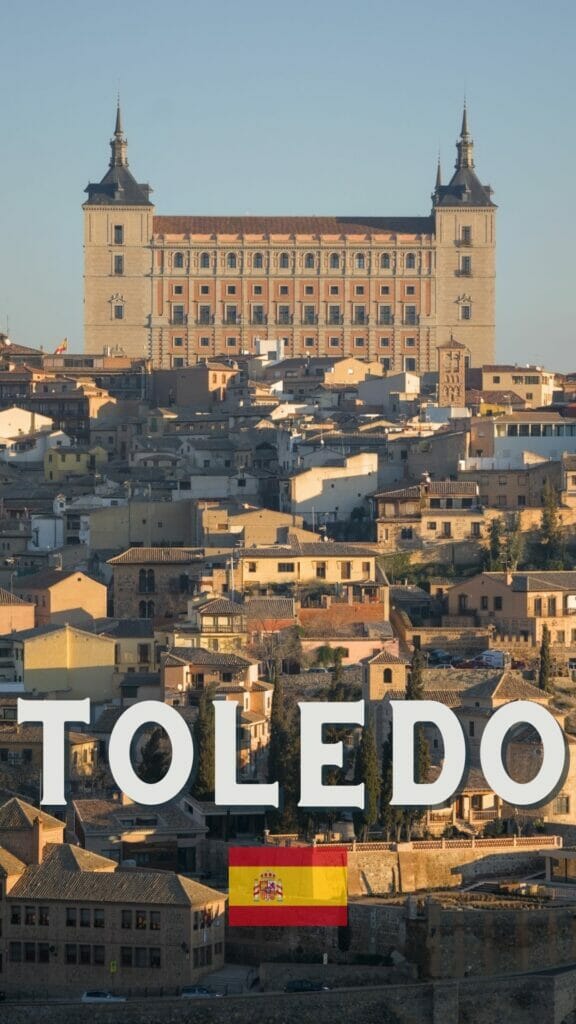
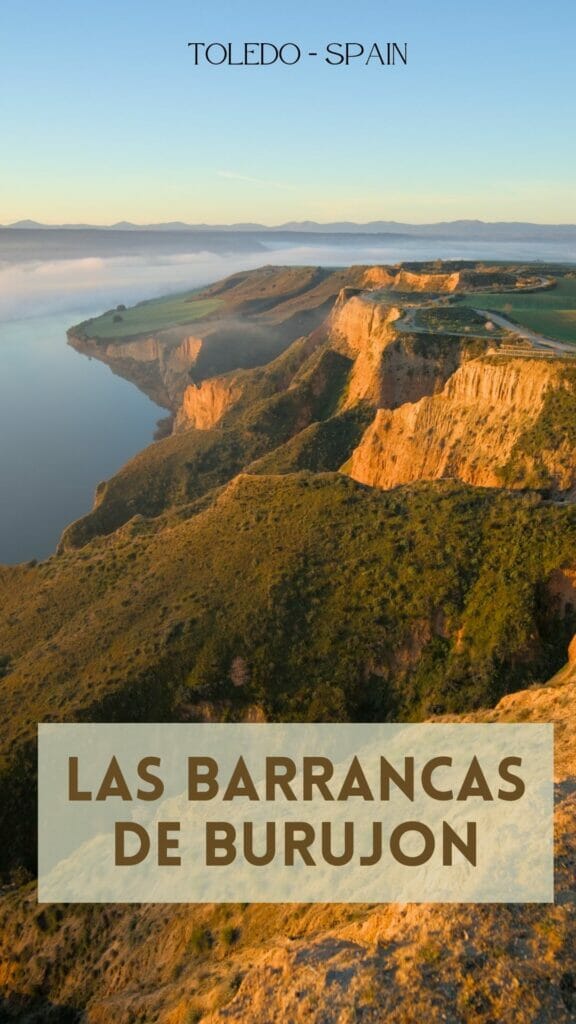
Note: if you click on one of our links to book your accommodation or a trip to the area, we will get a small commission (and you won’t pay a cent more). By doing this, you support us in creating free and independent content like this. Thank you for your support!
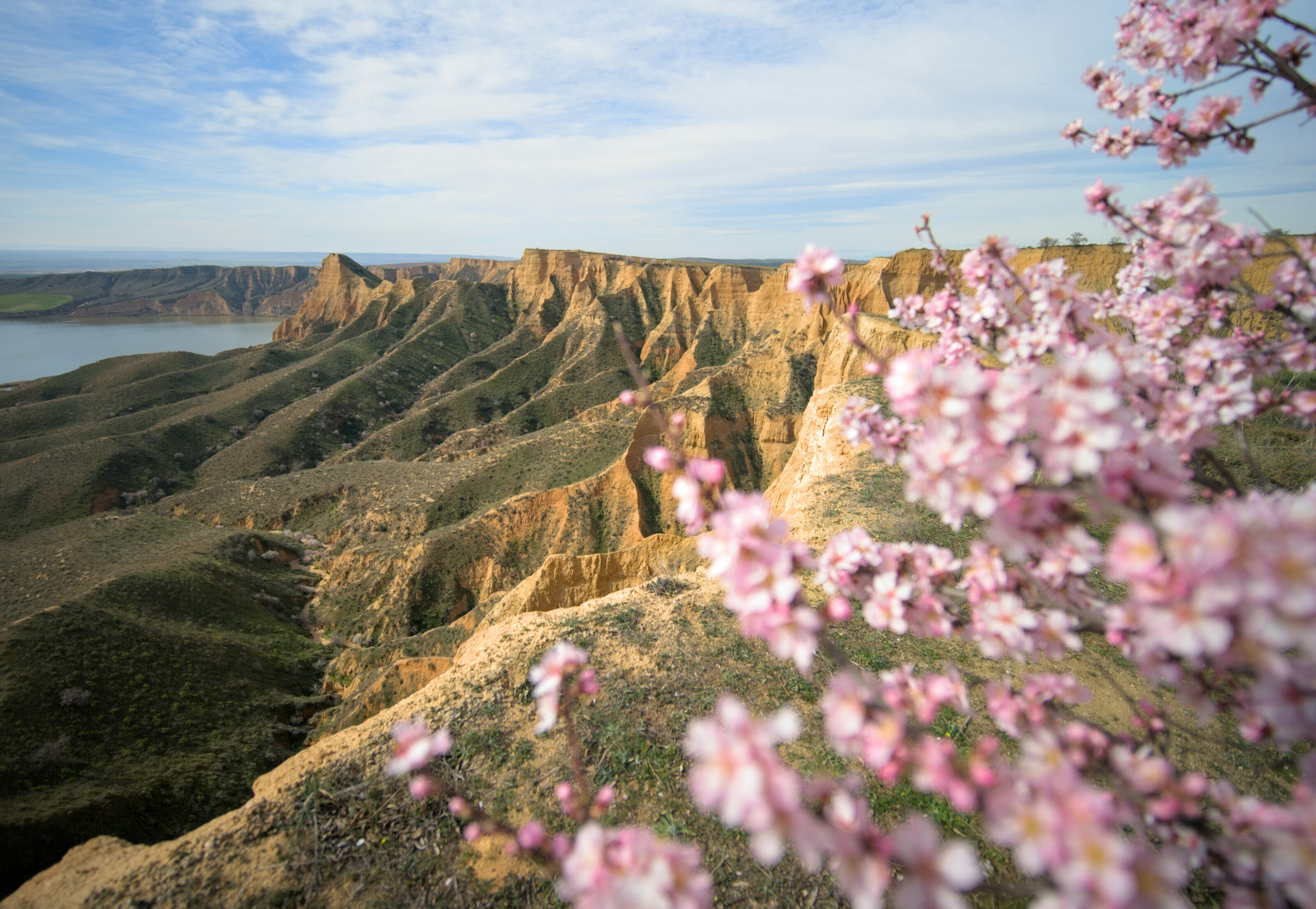
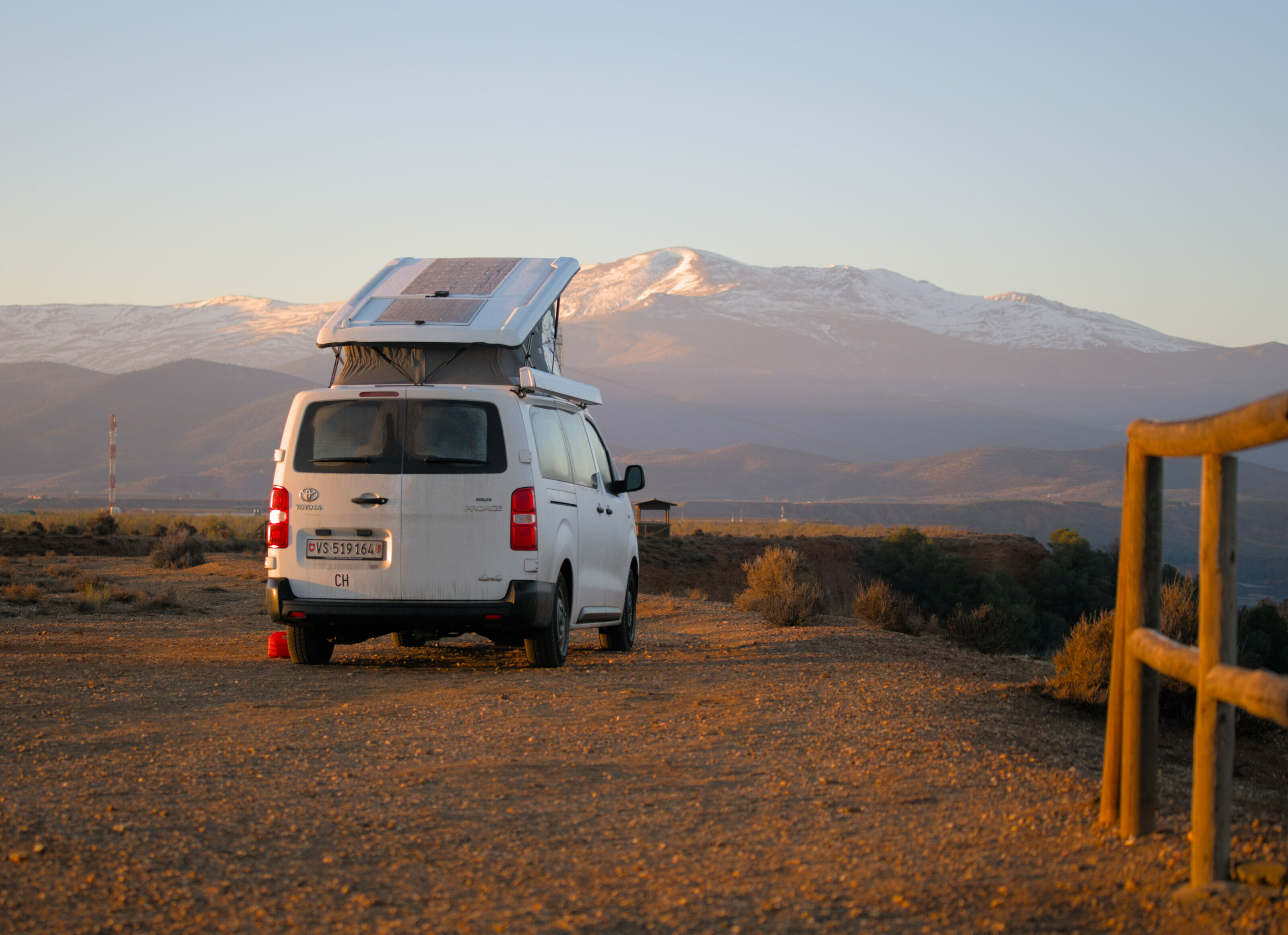
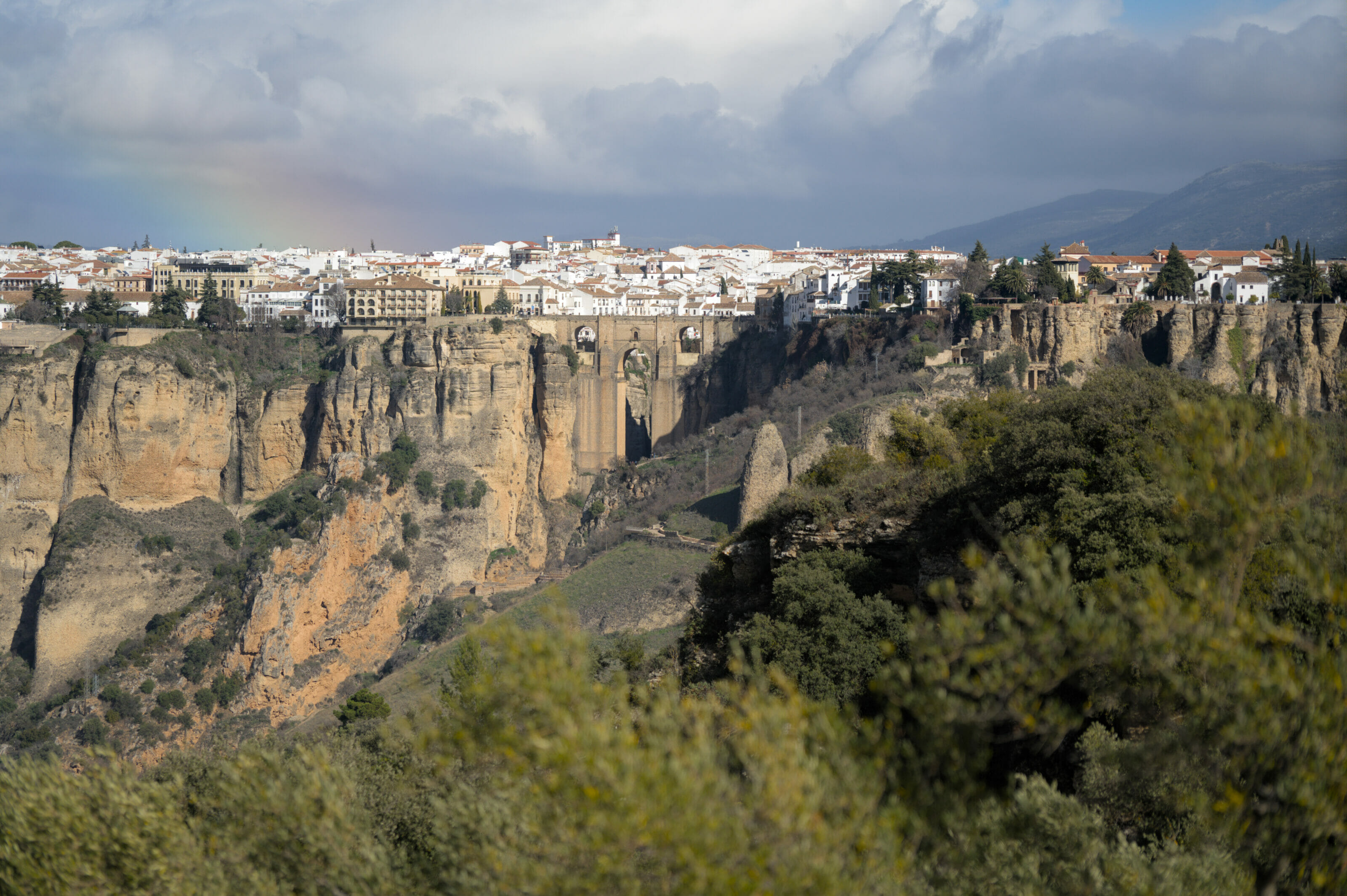
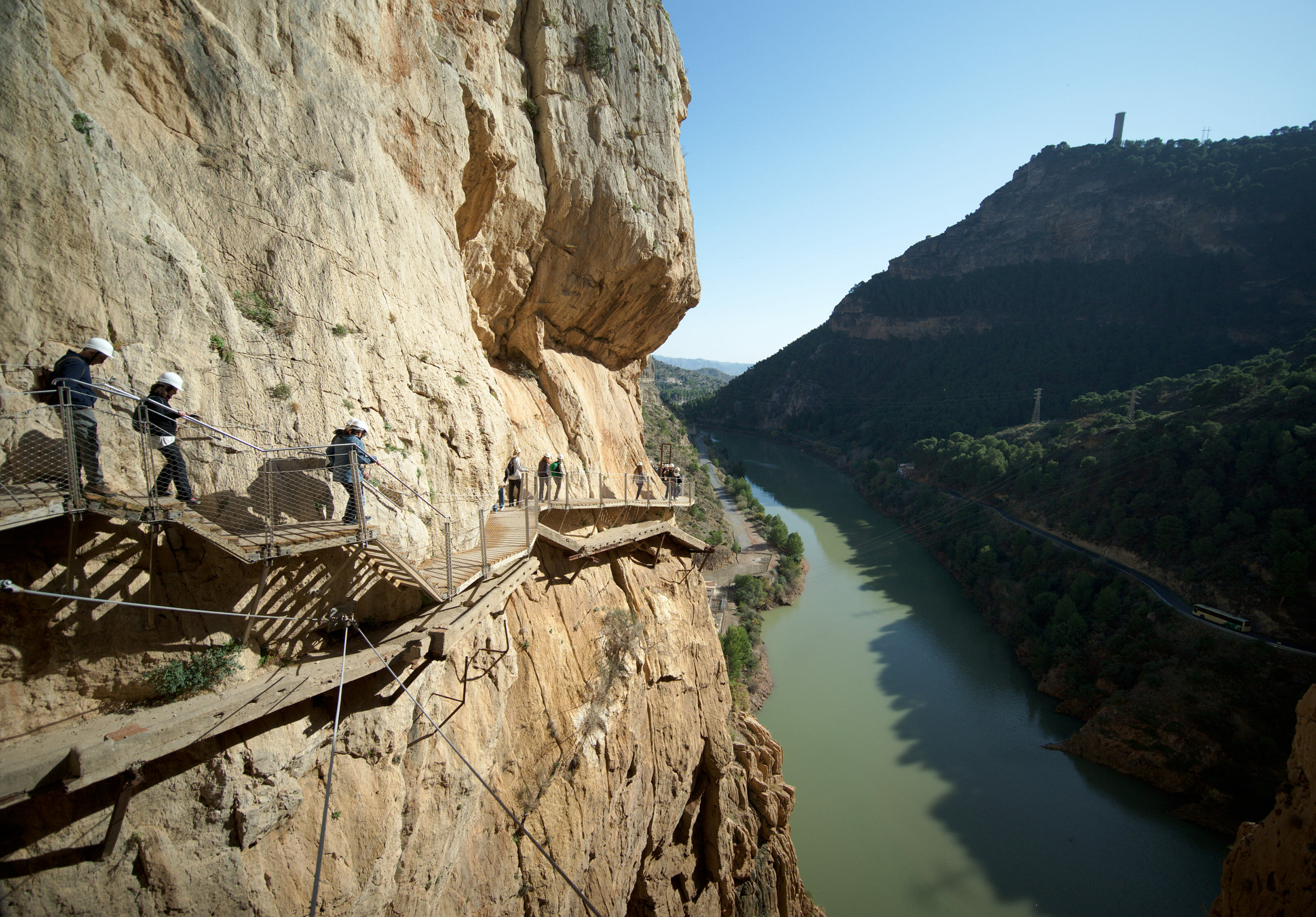
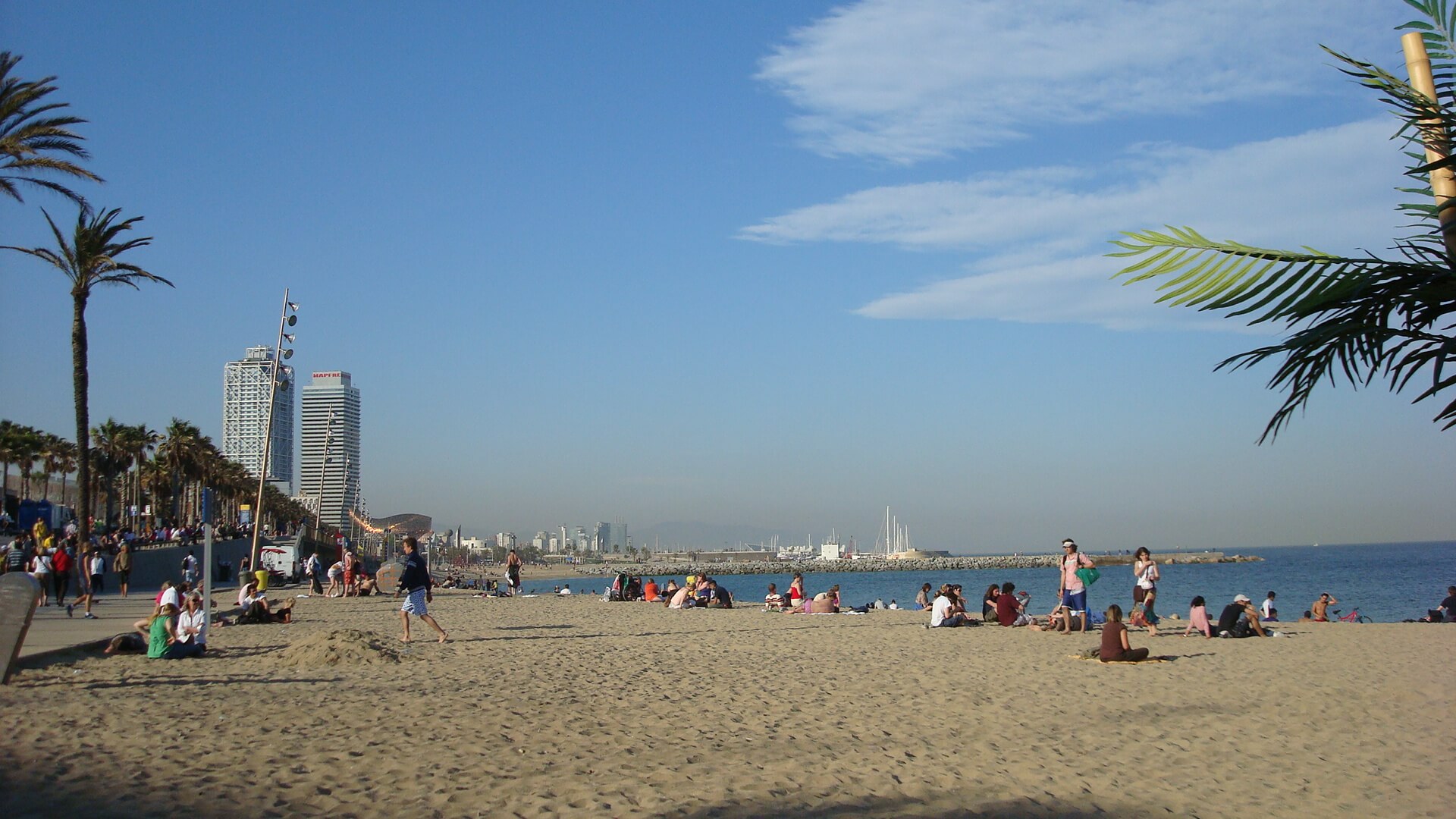
Join the discussion